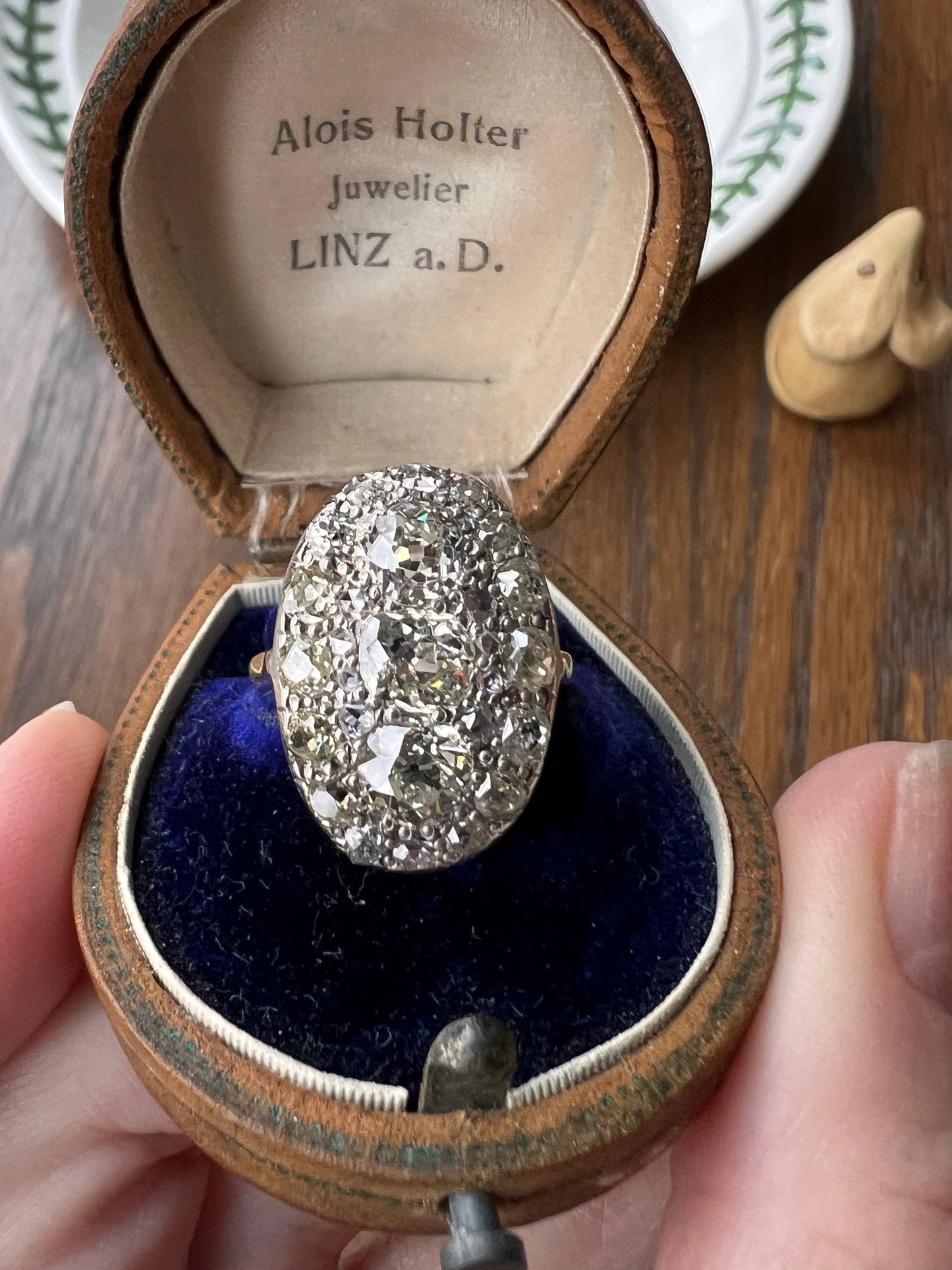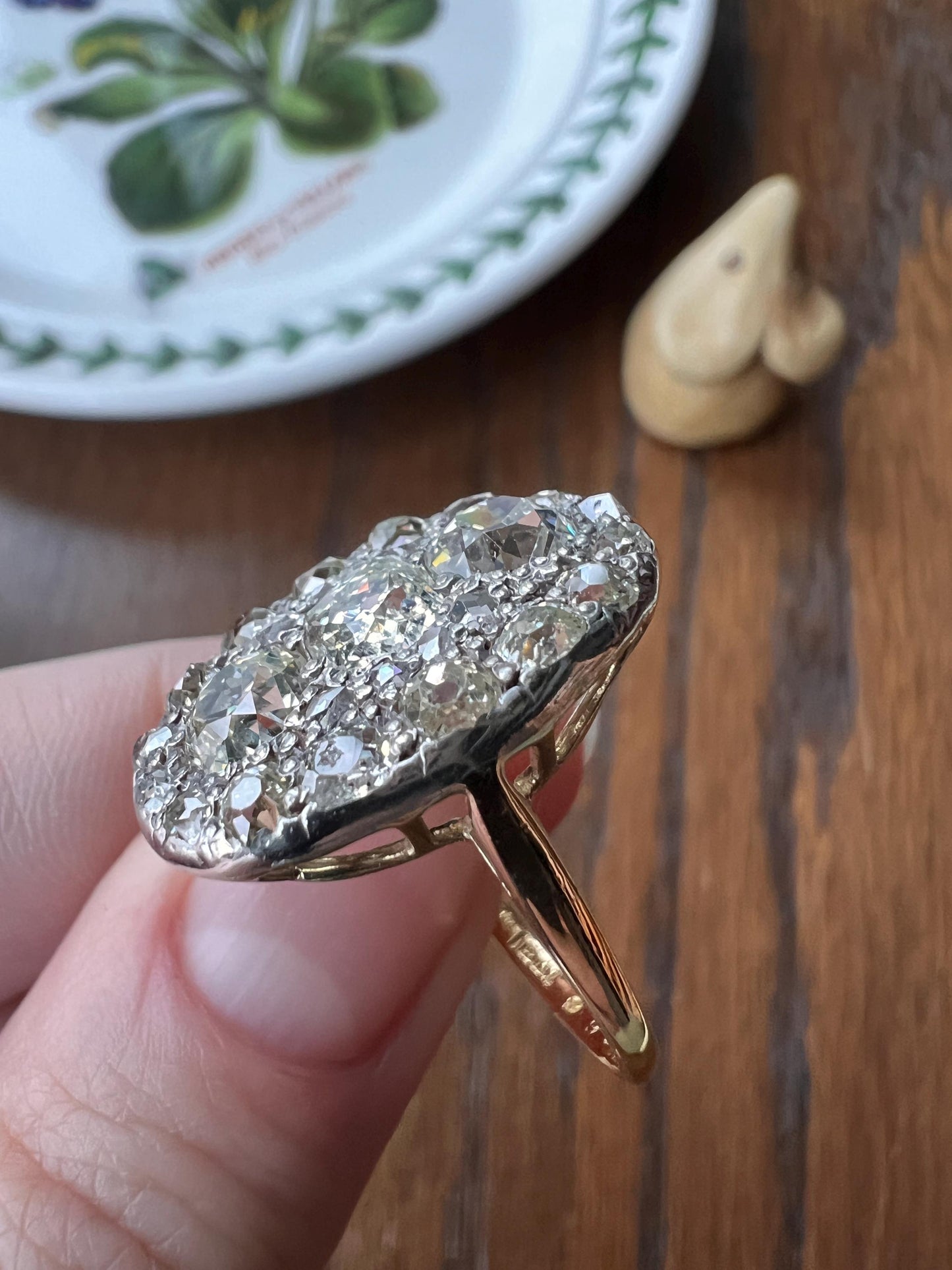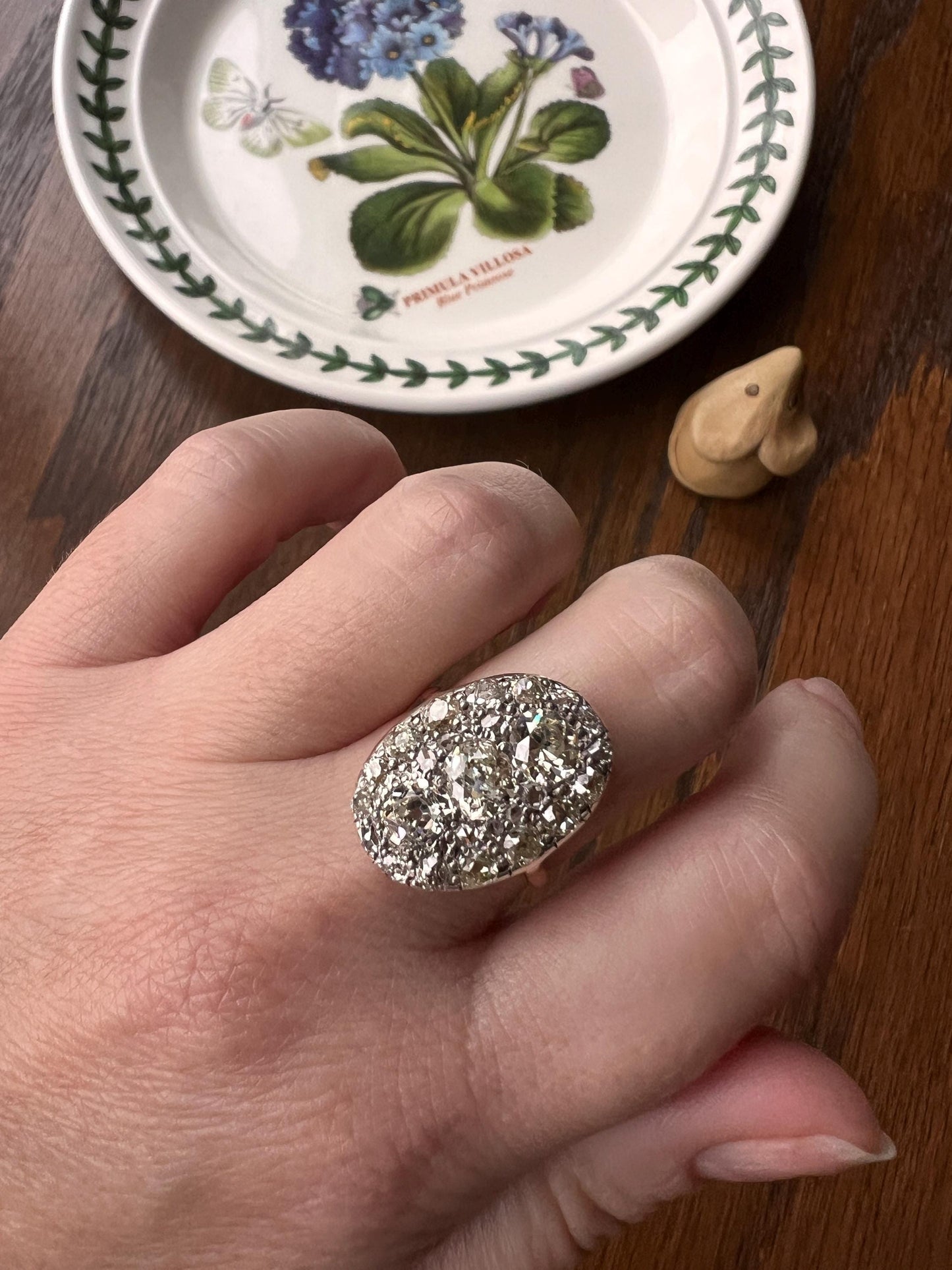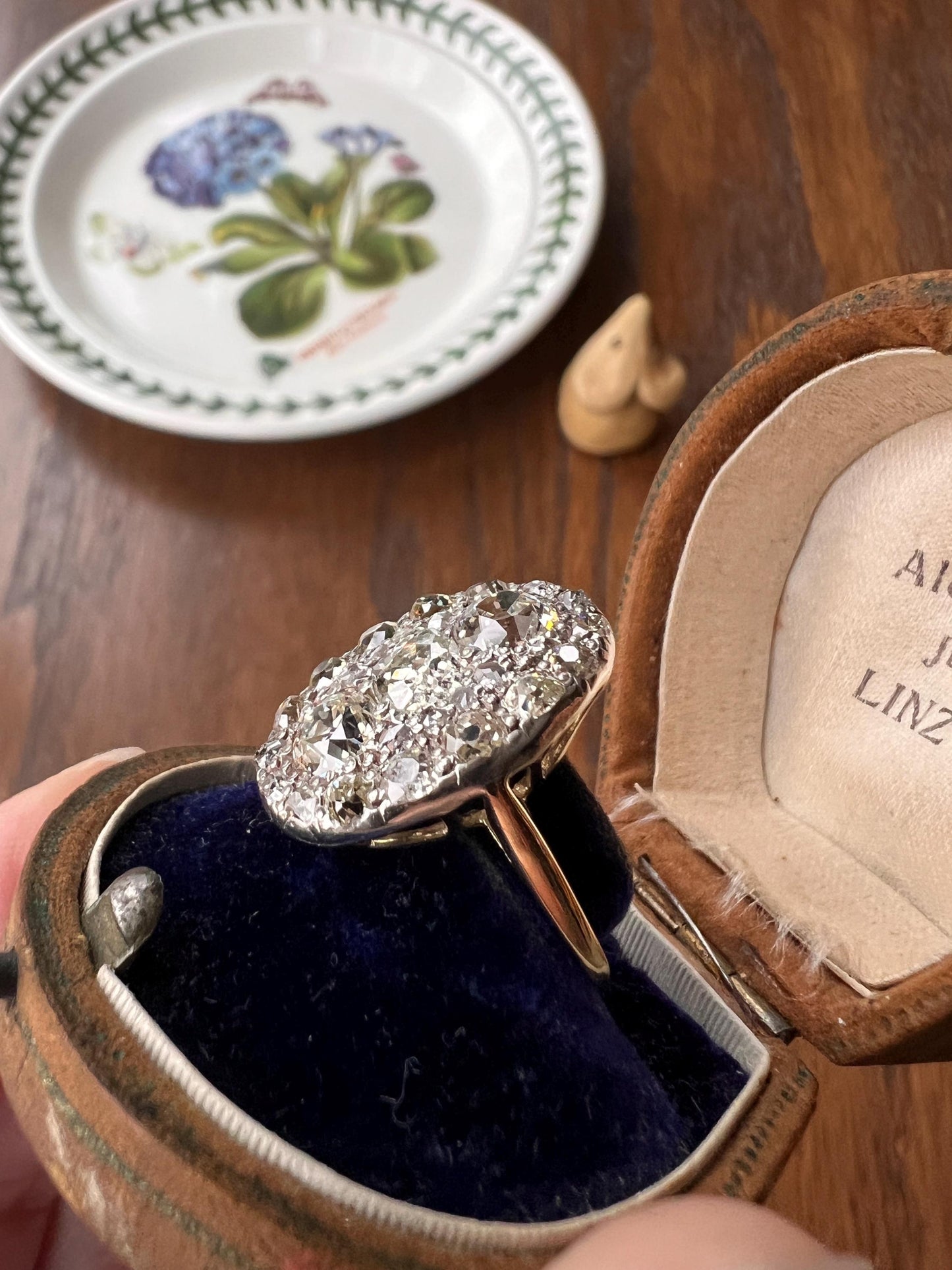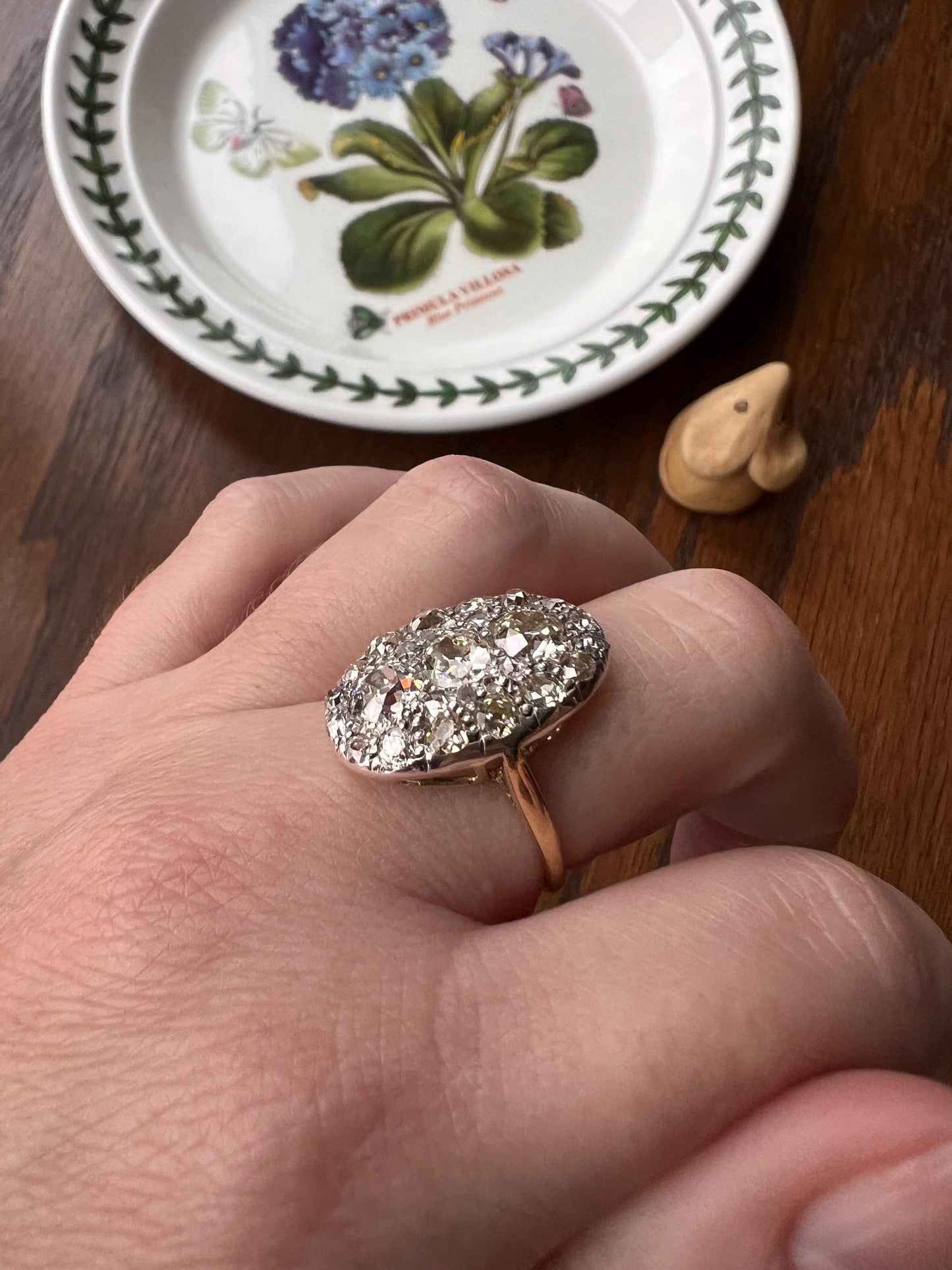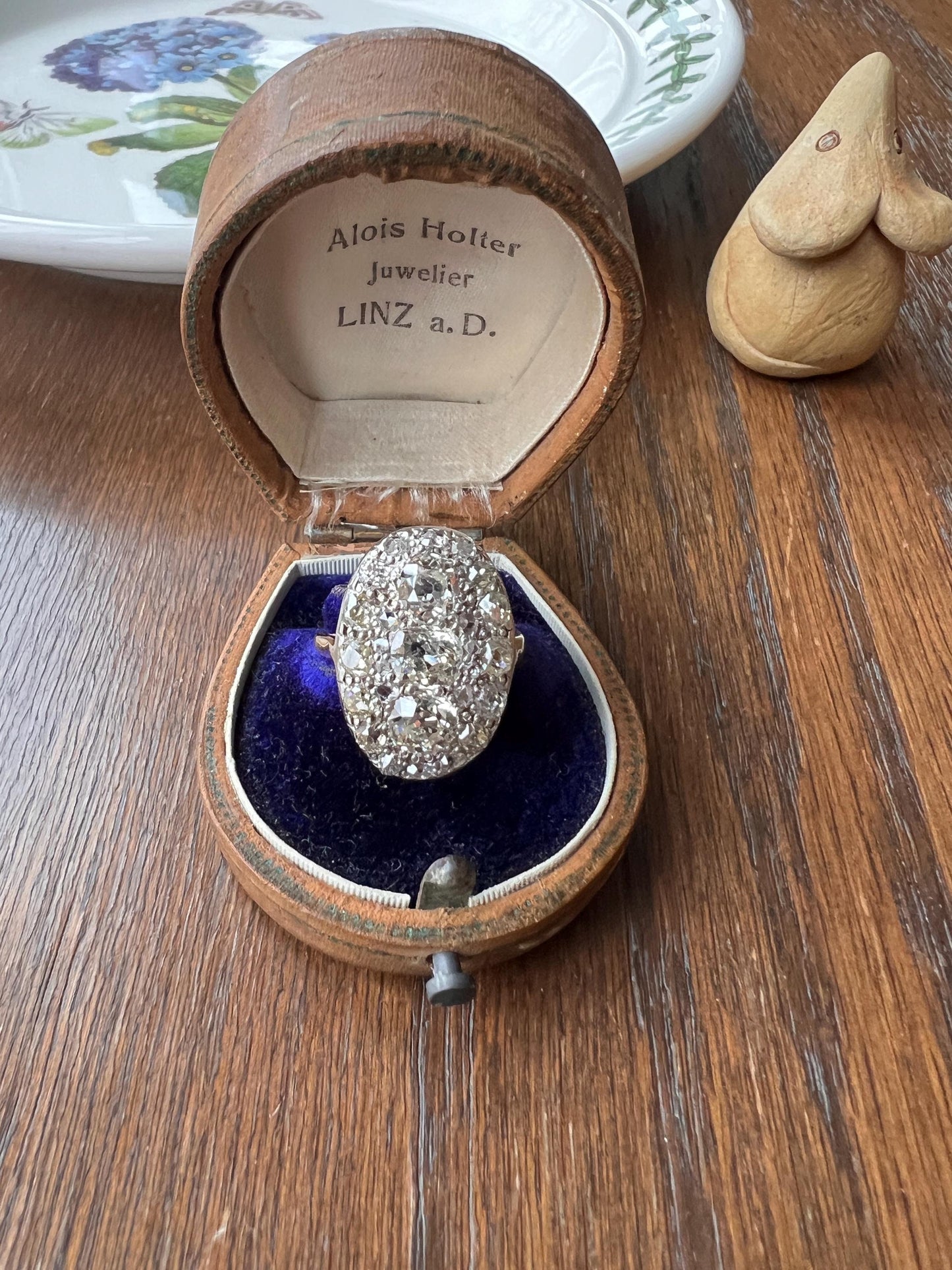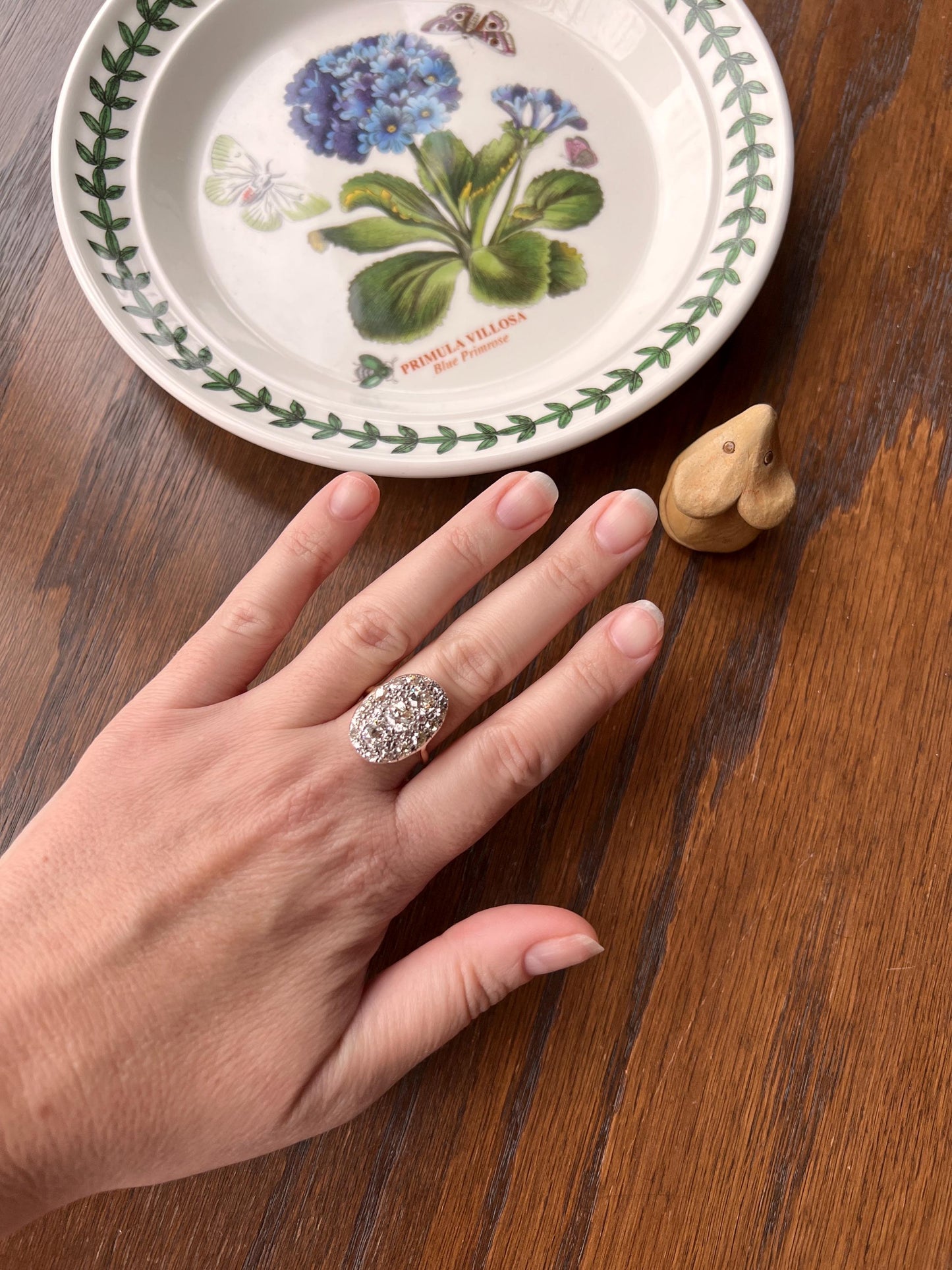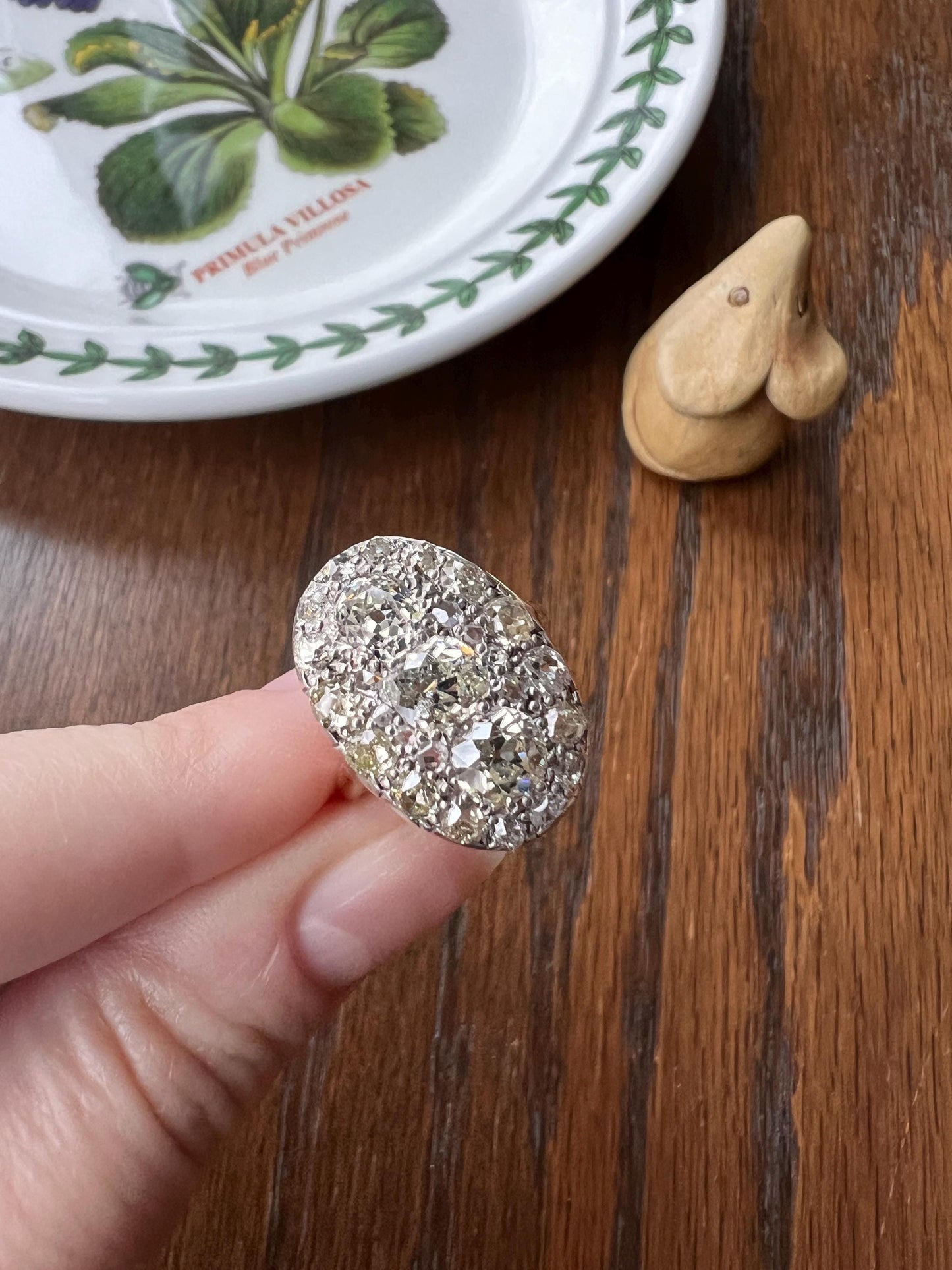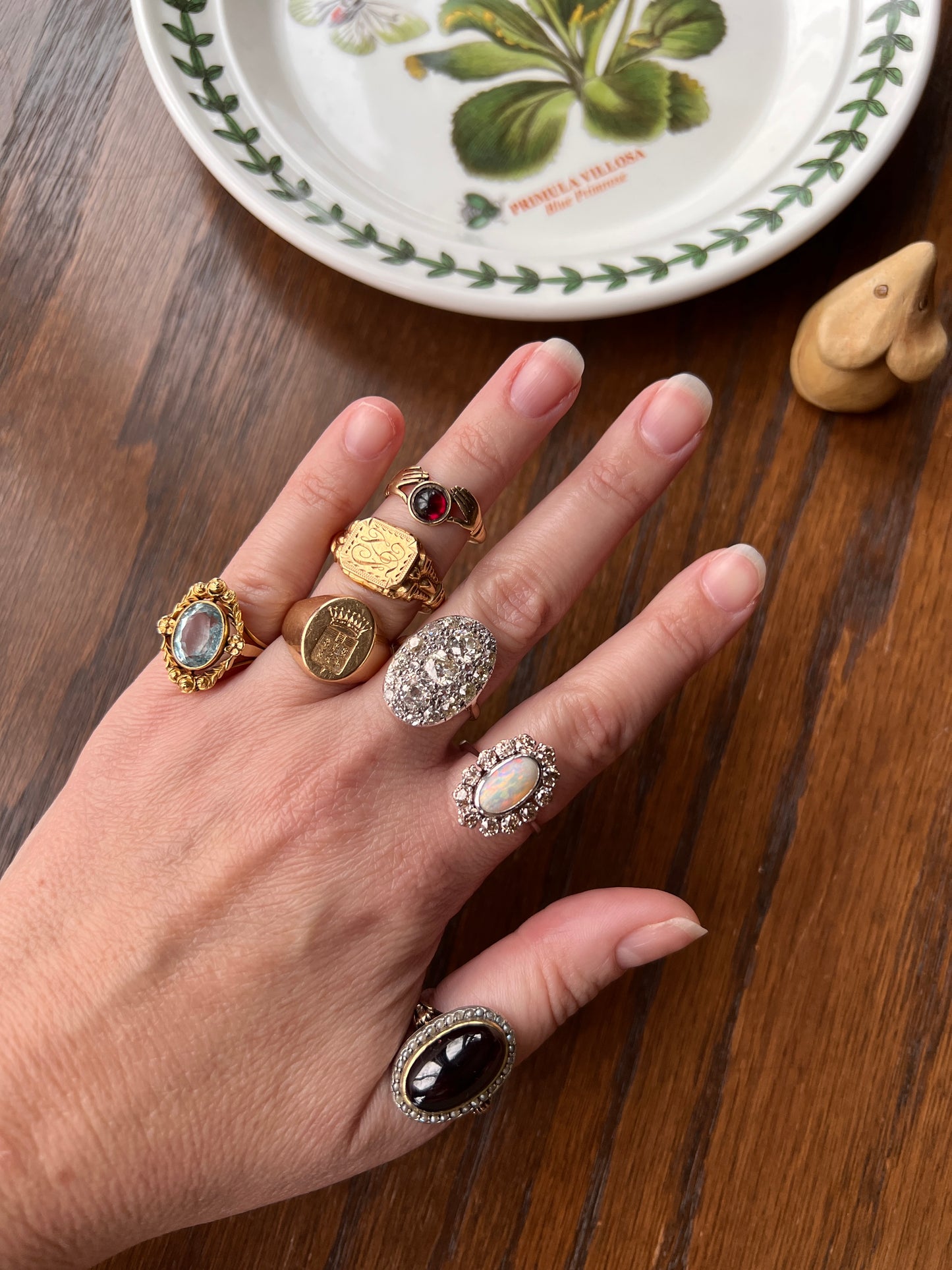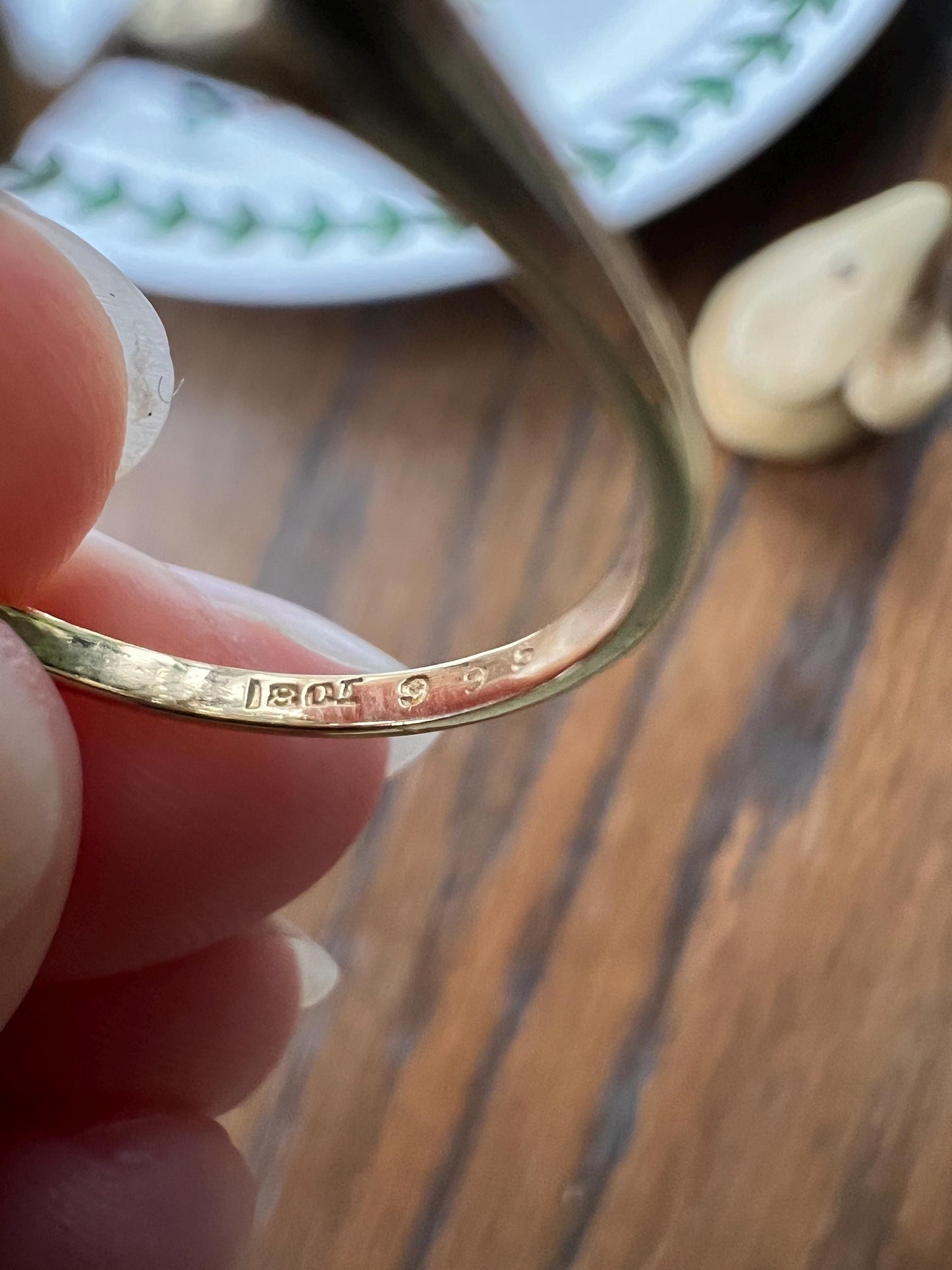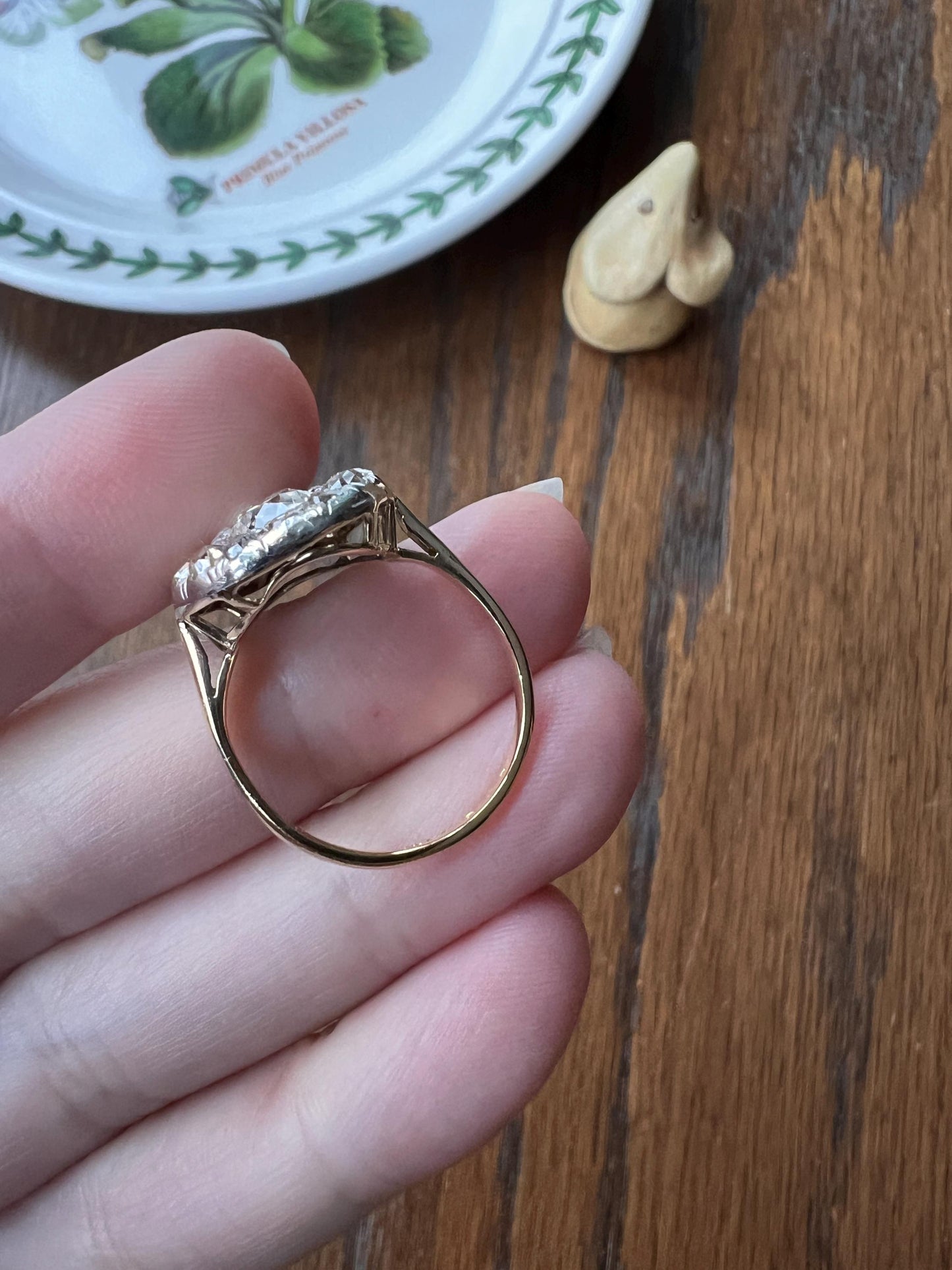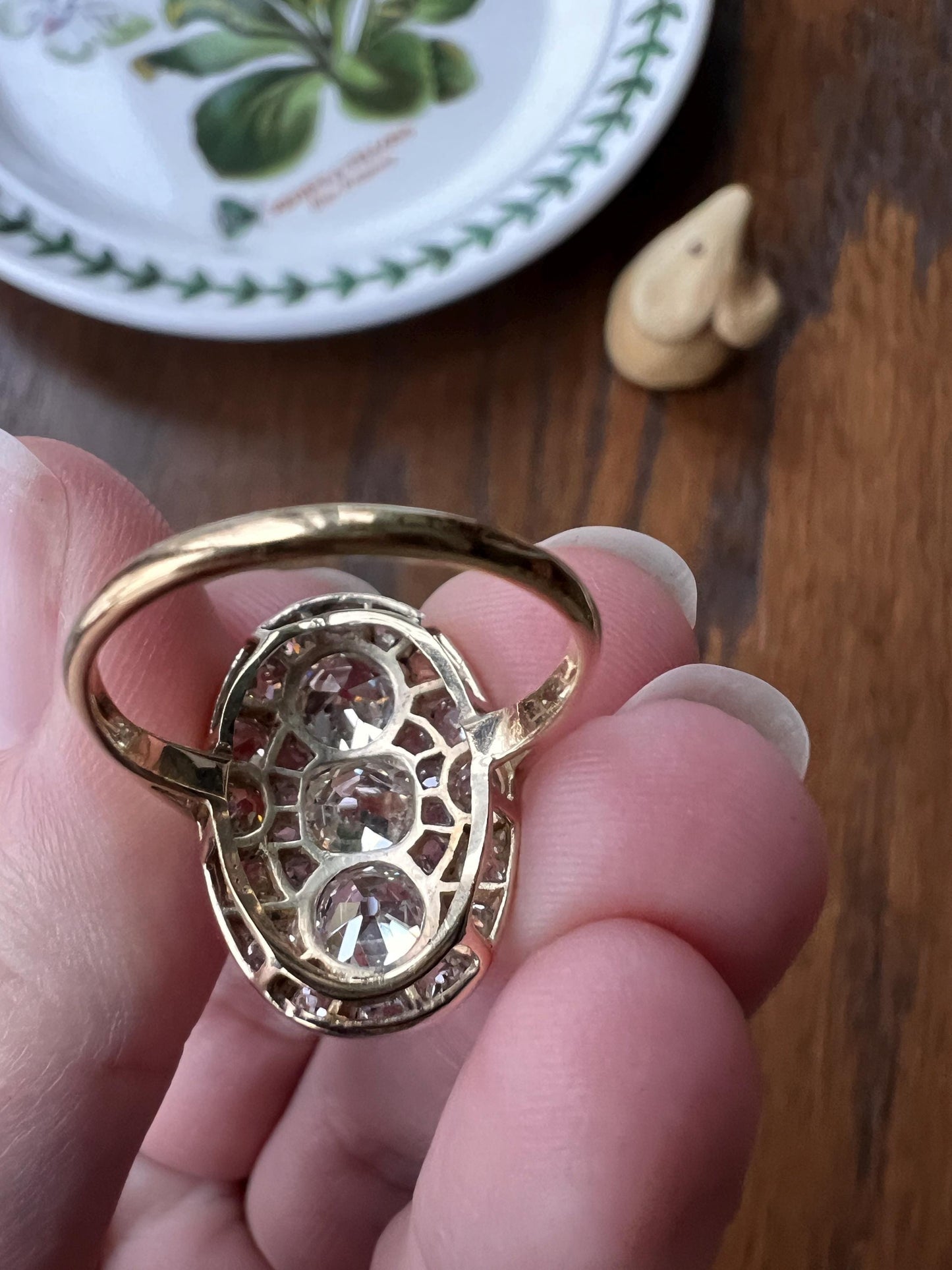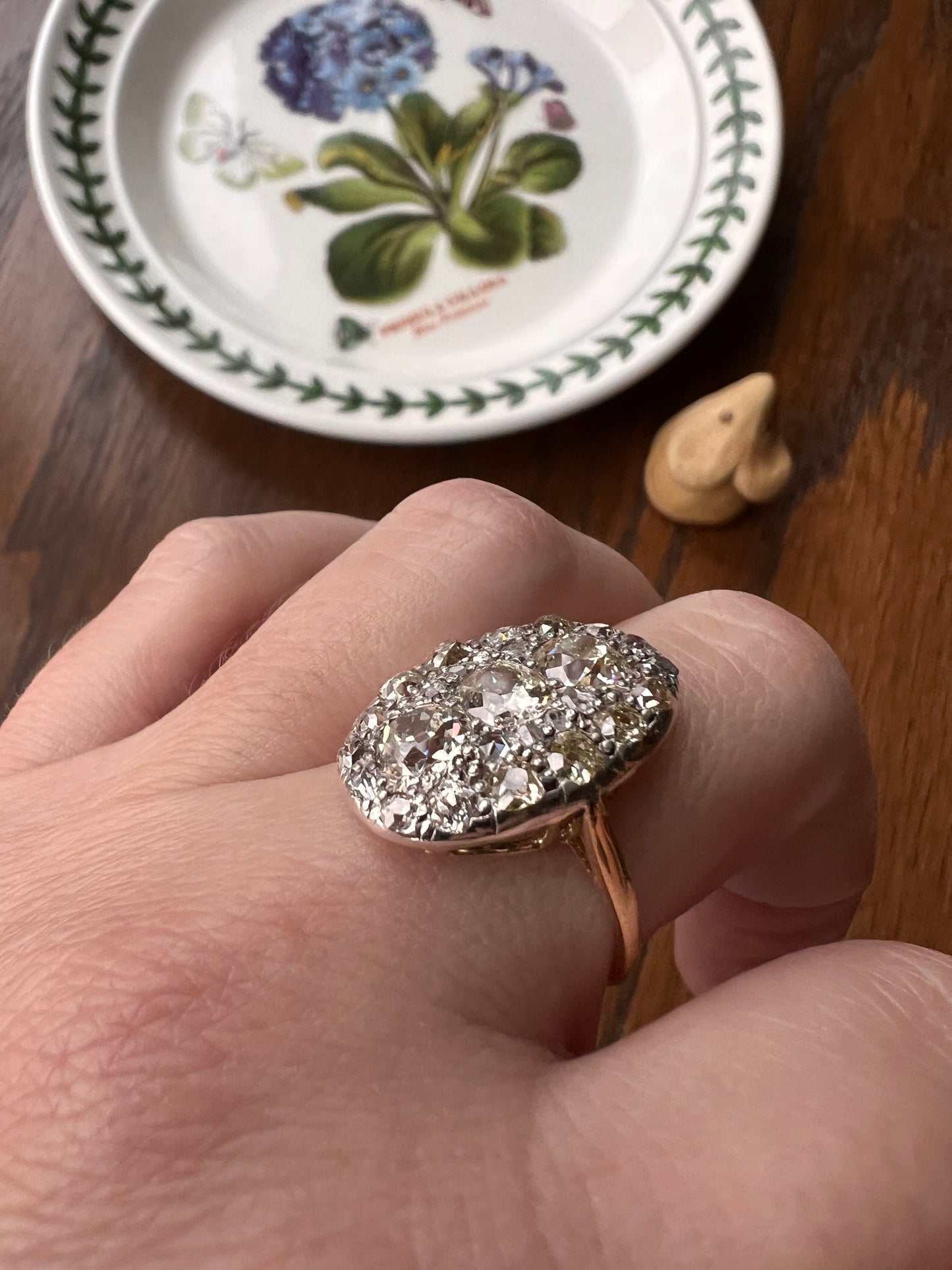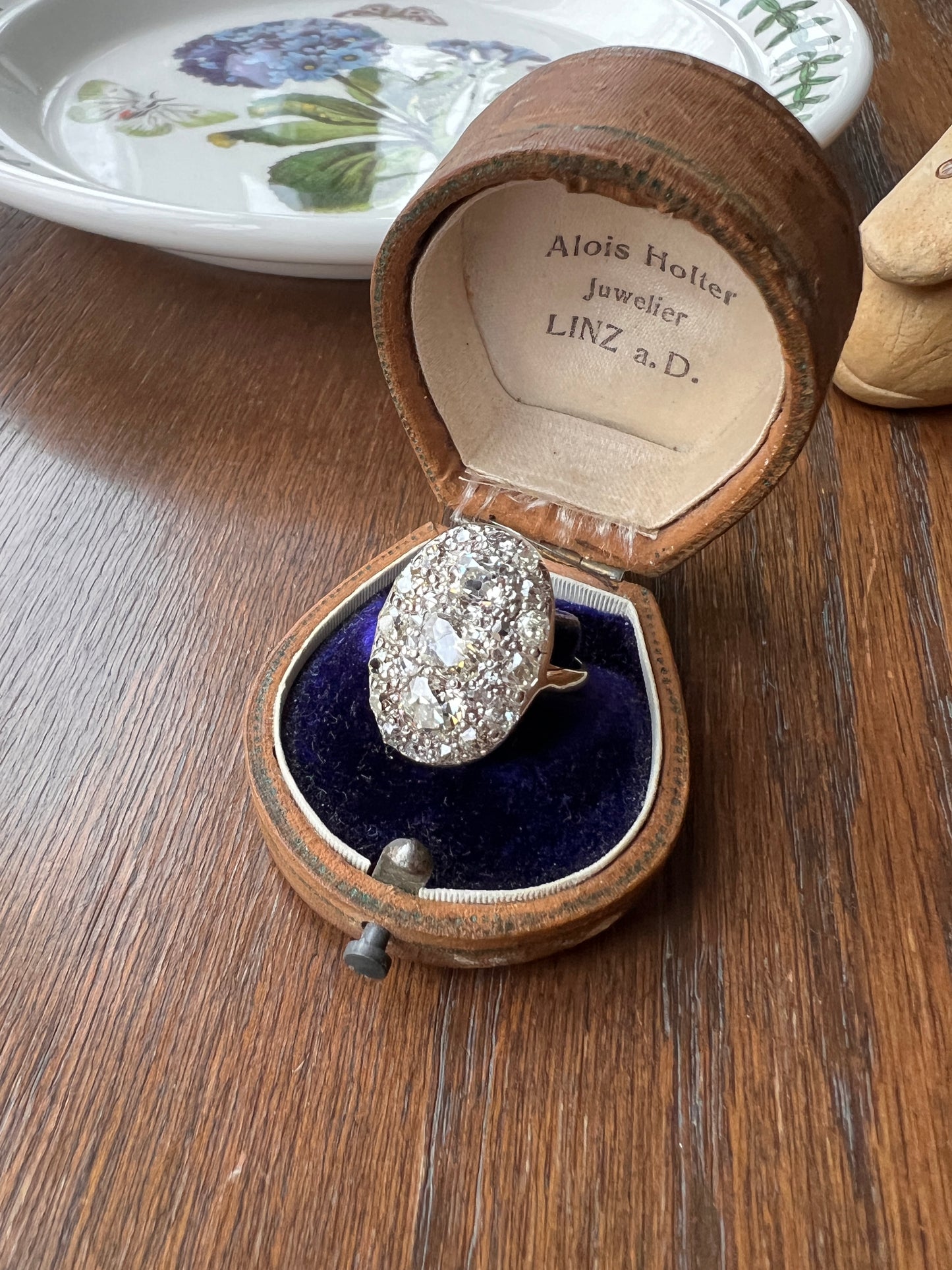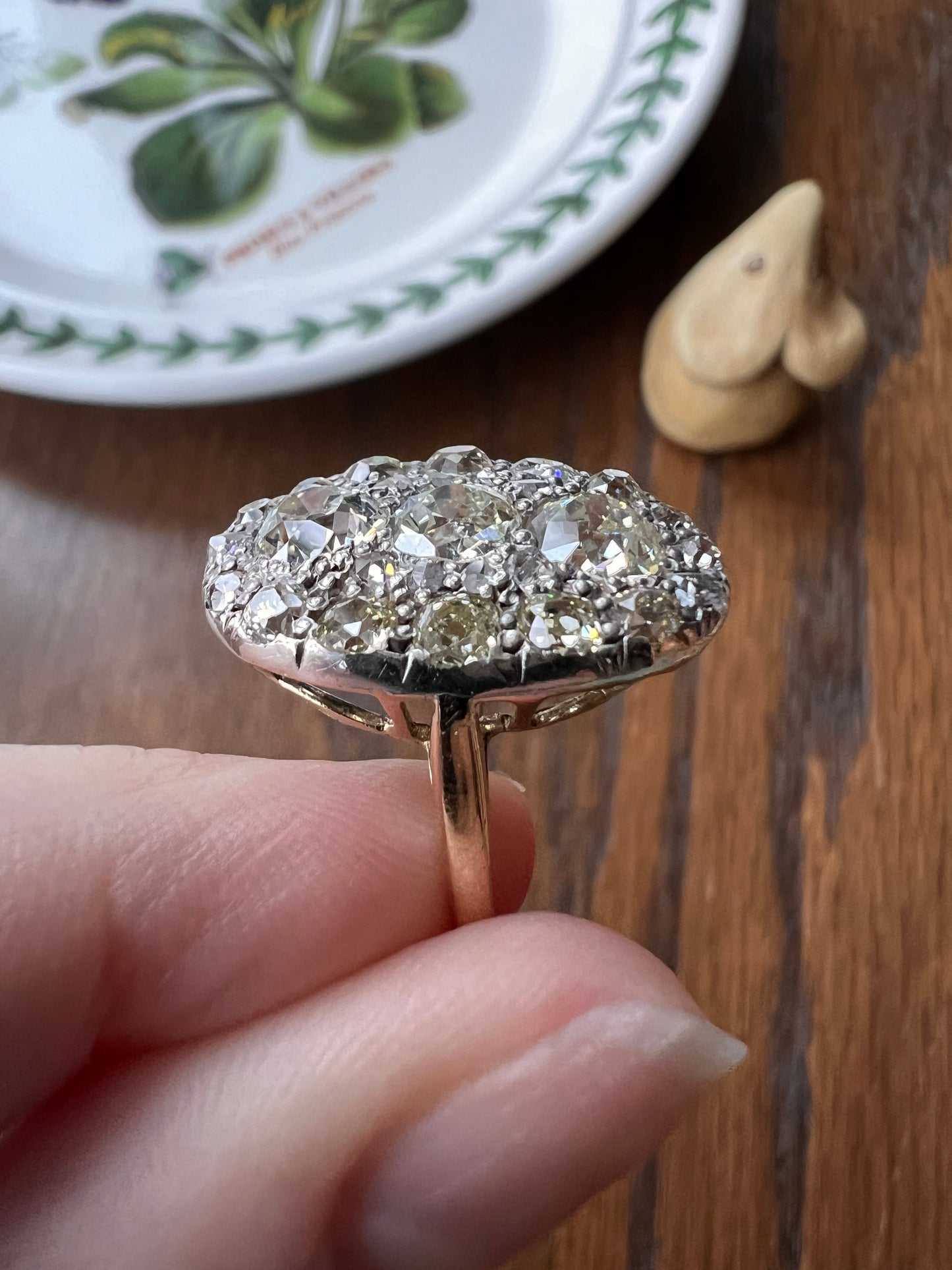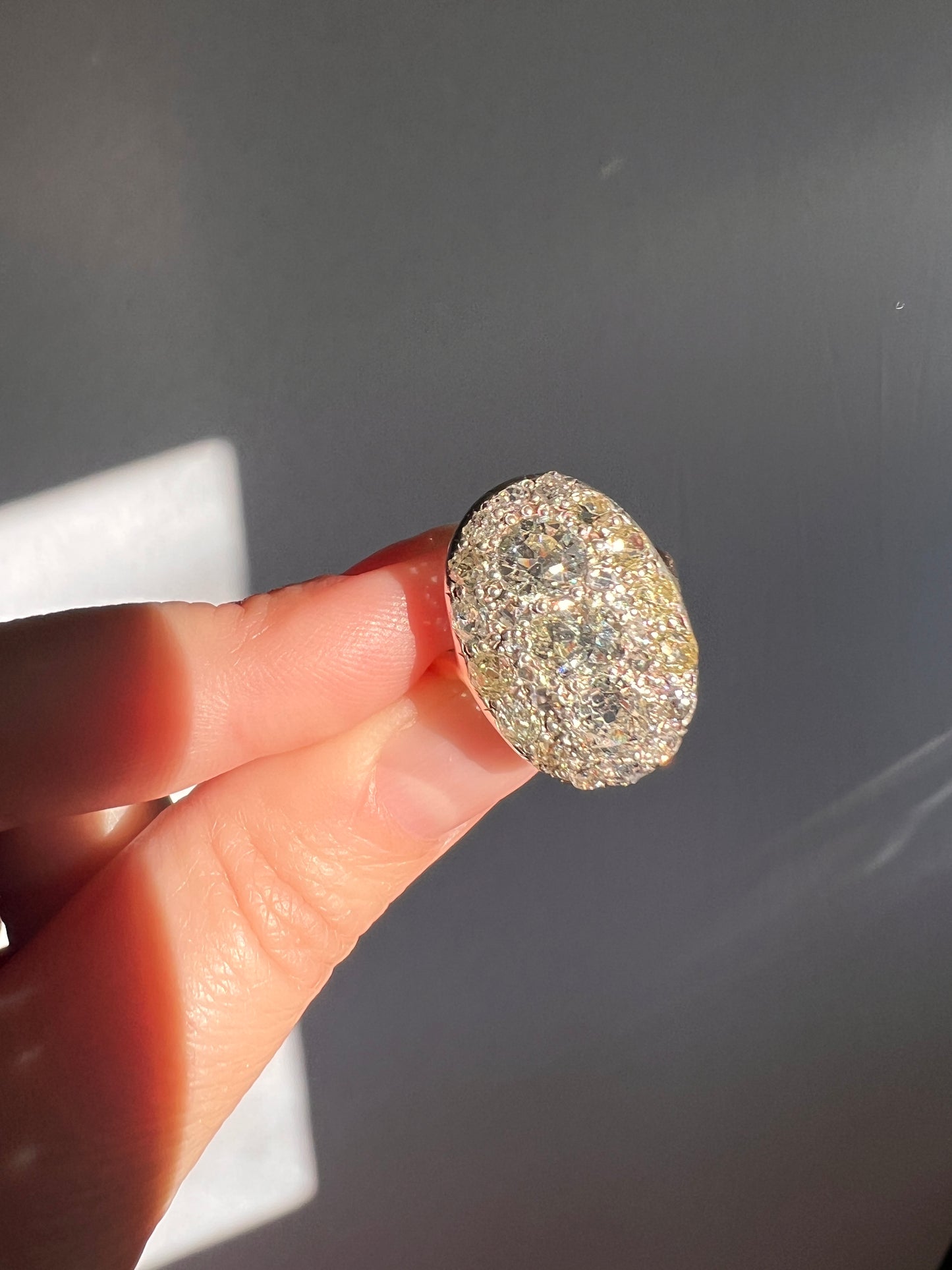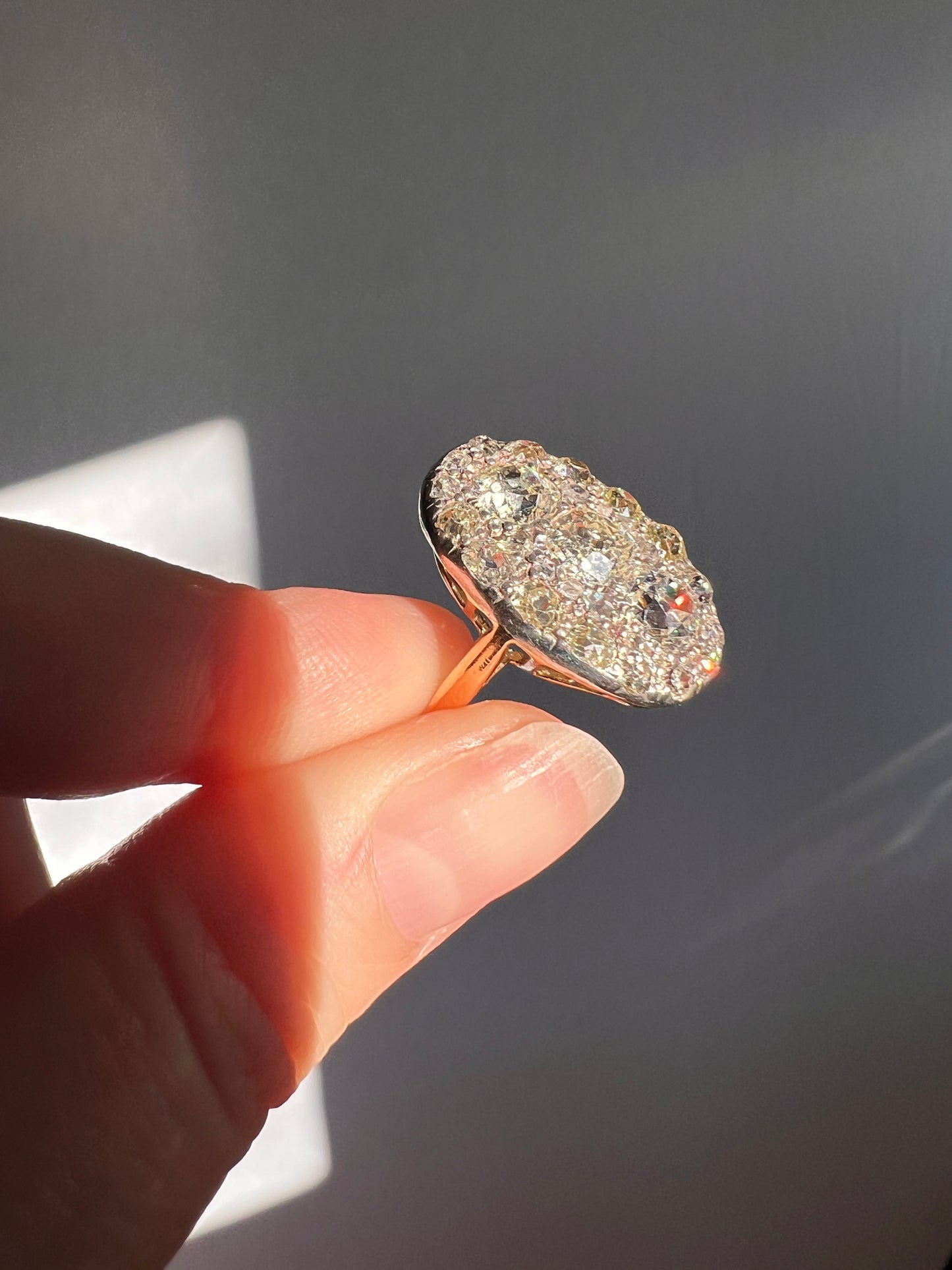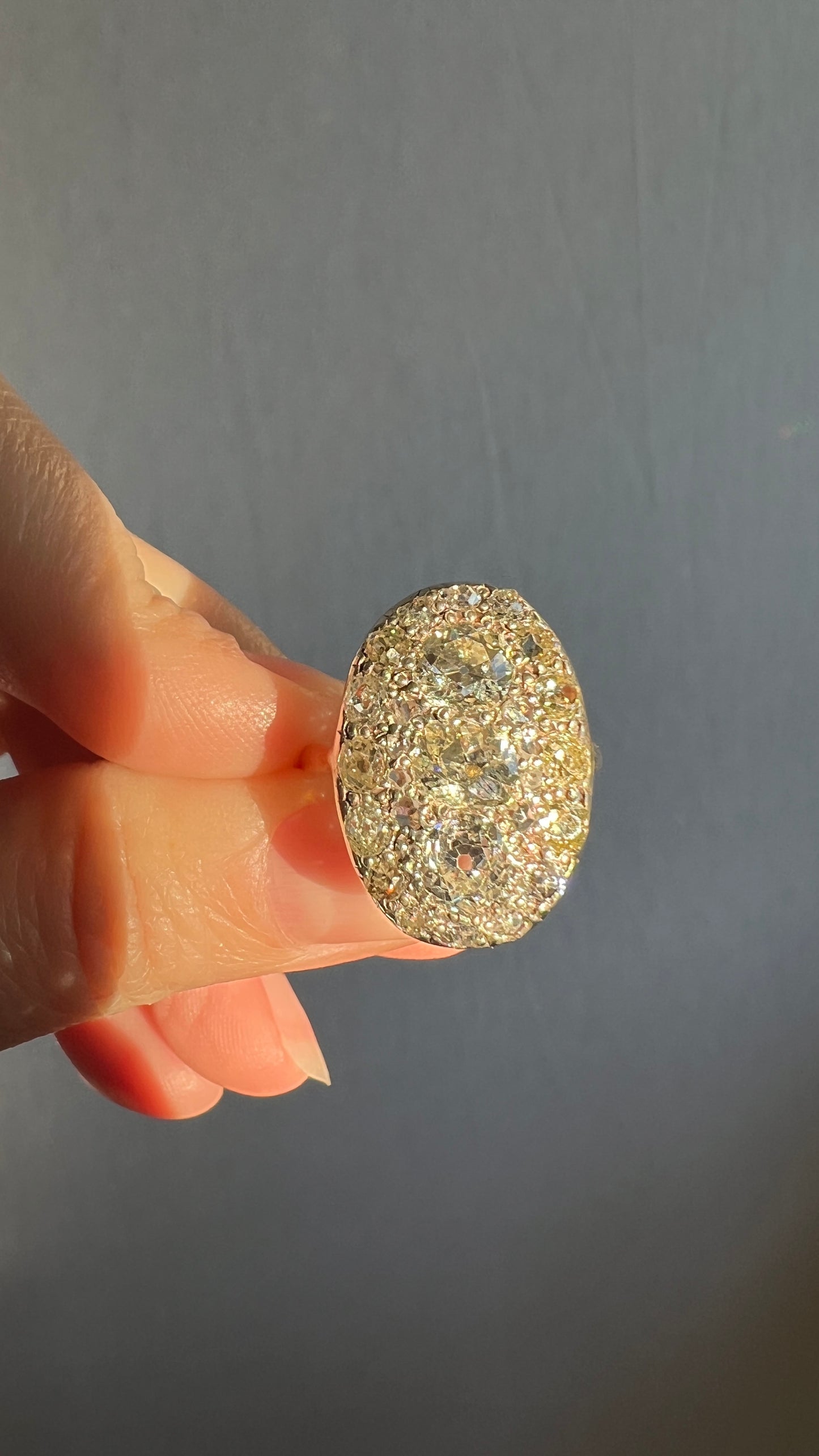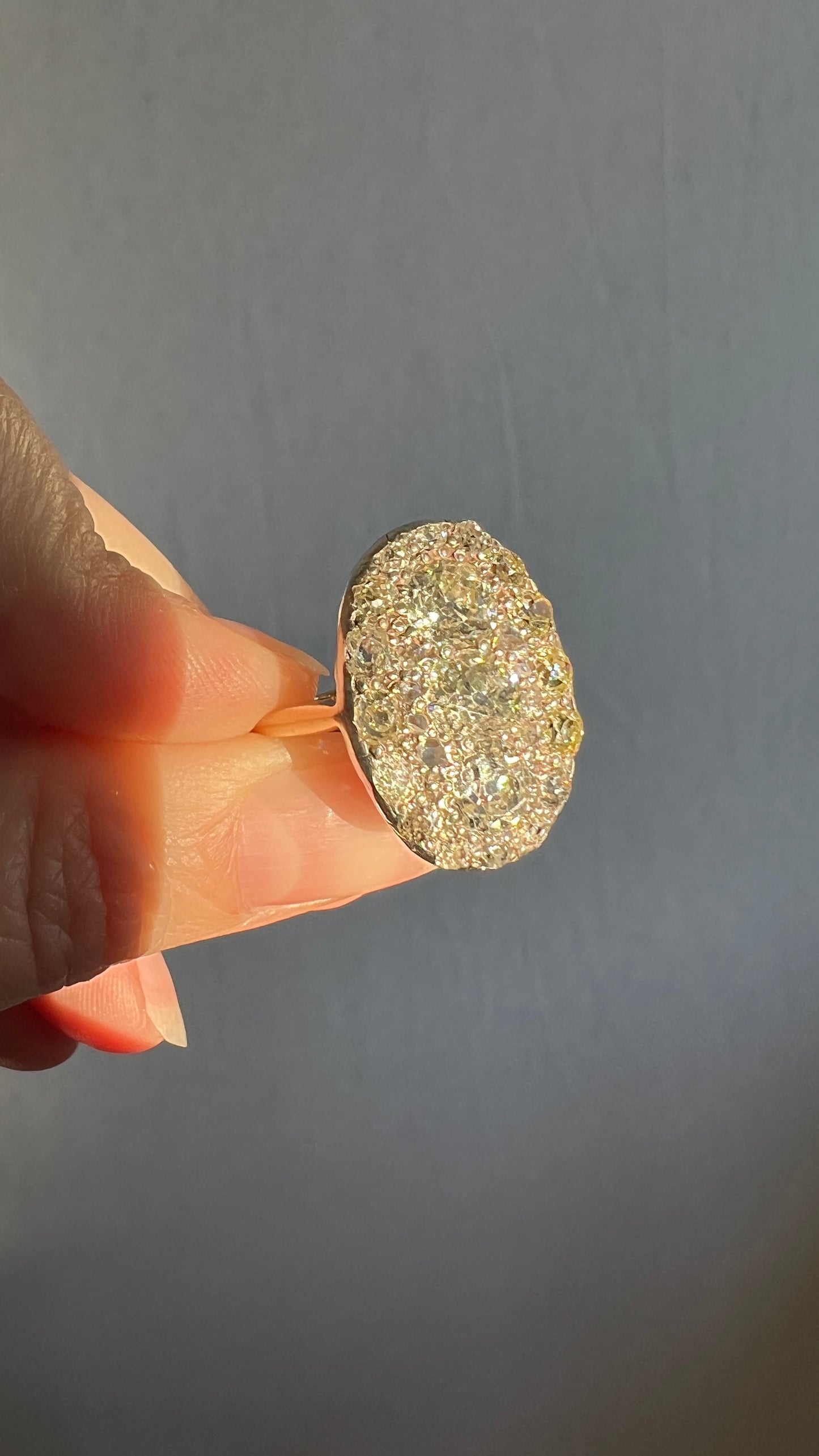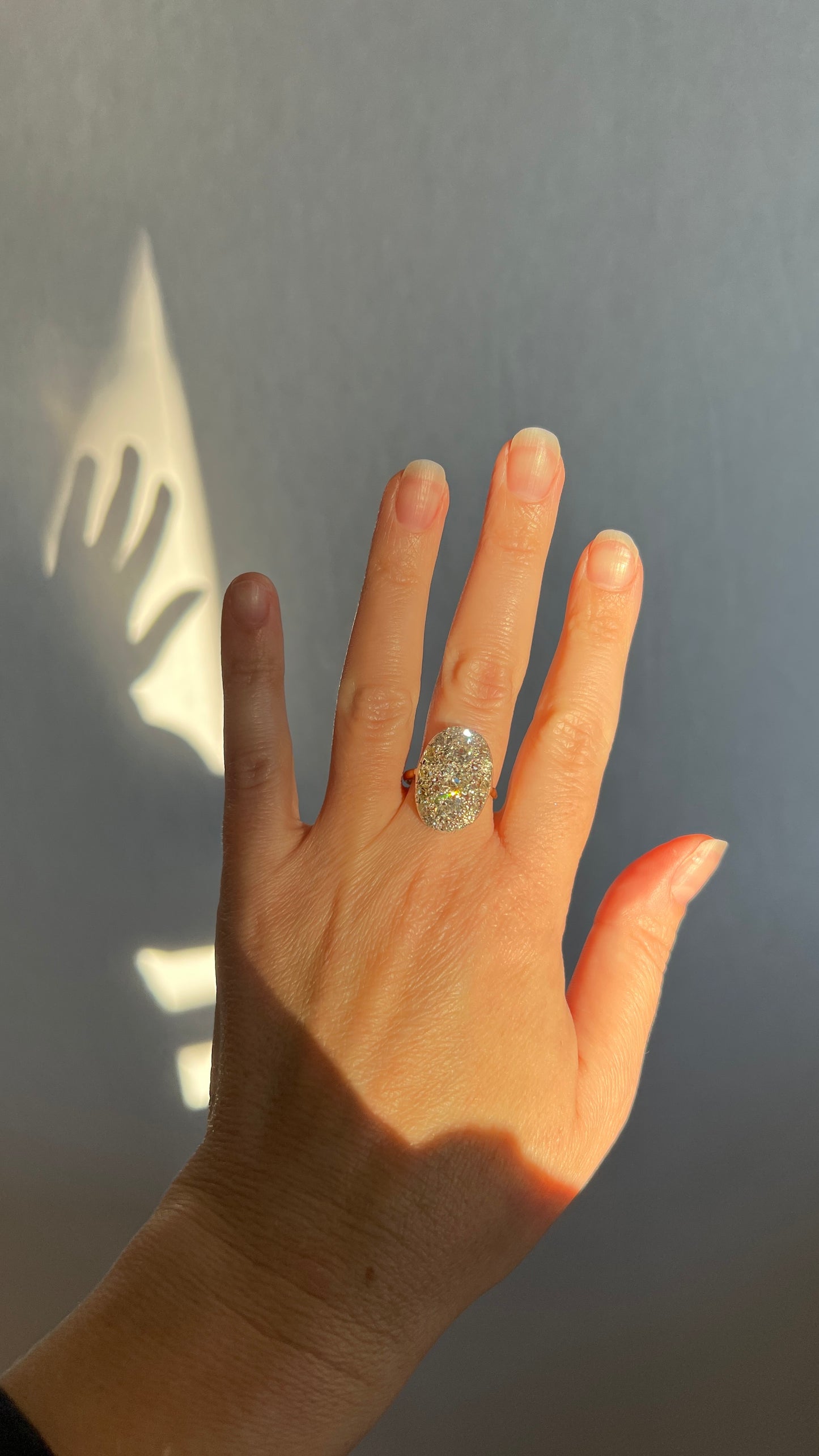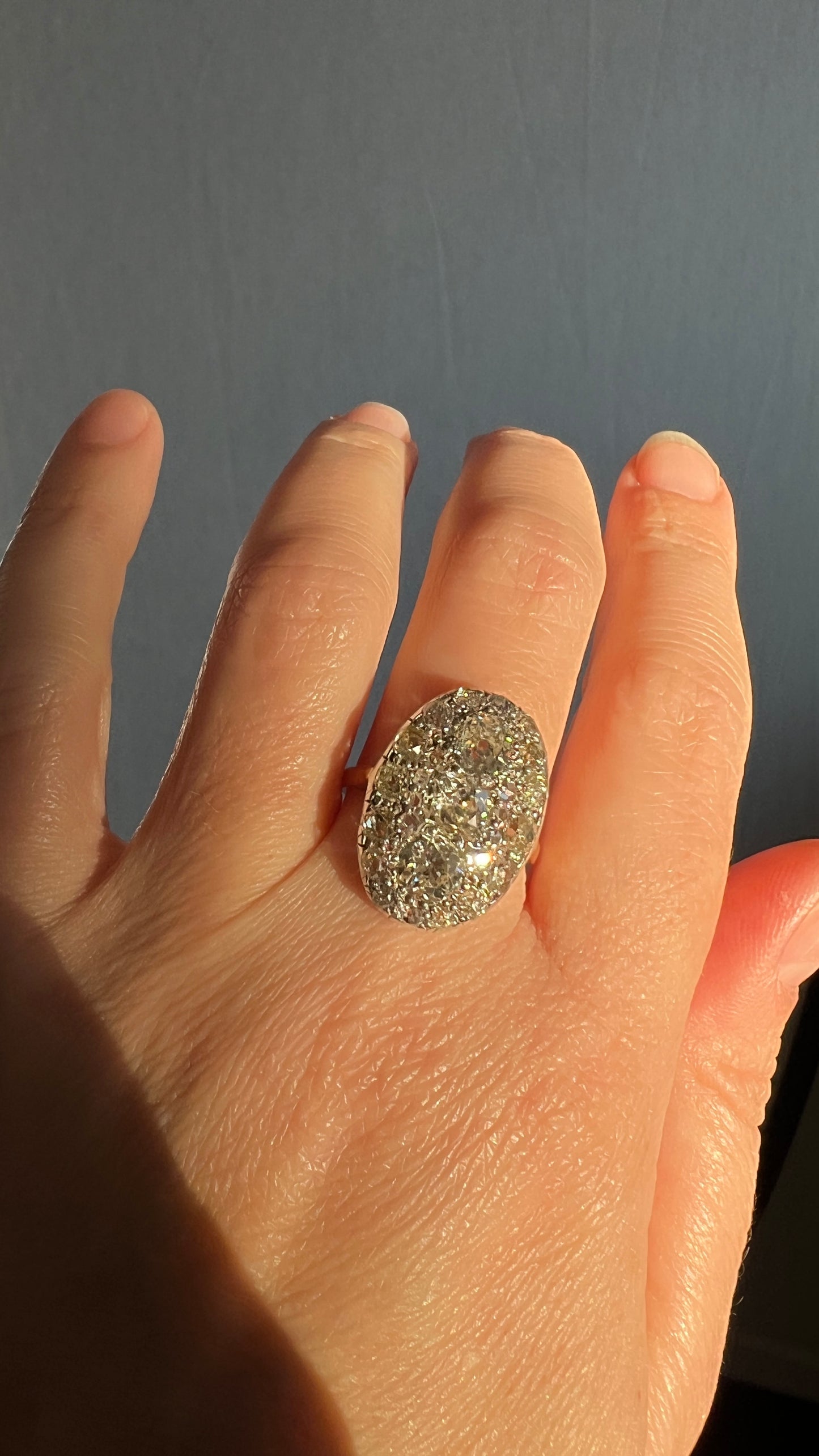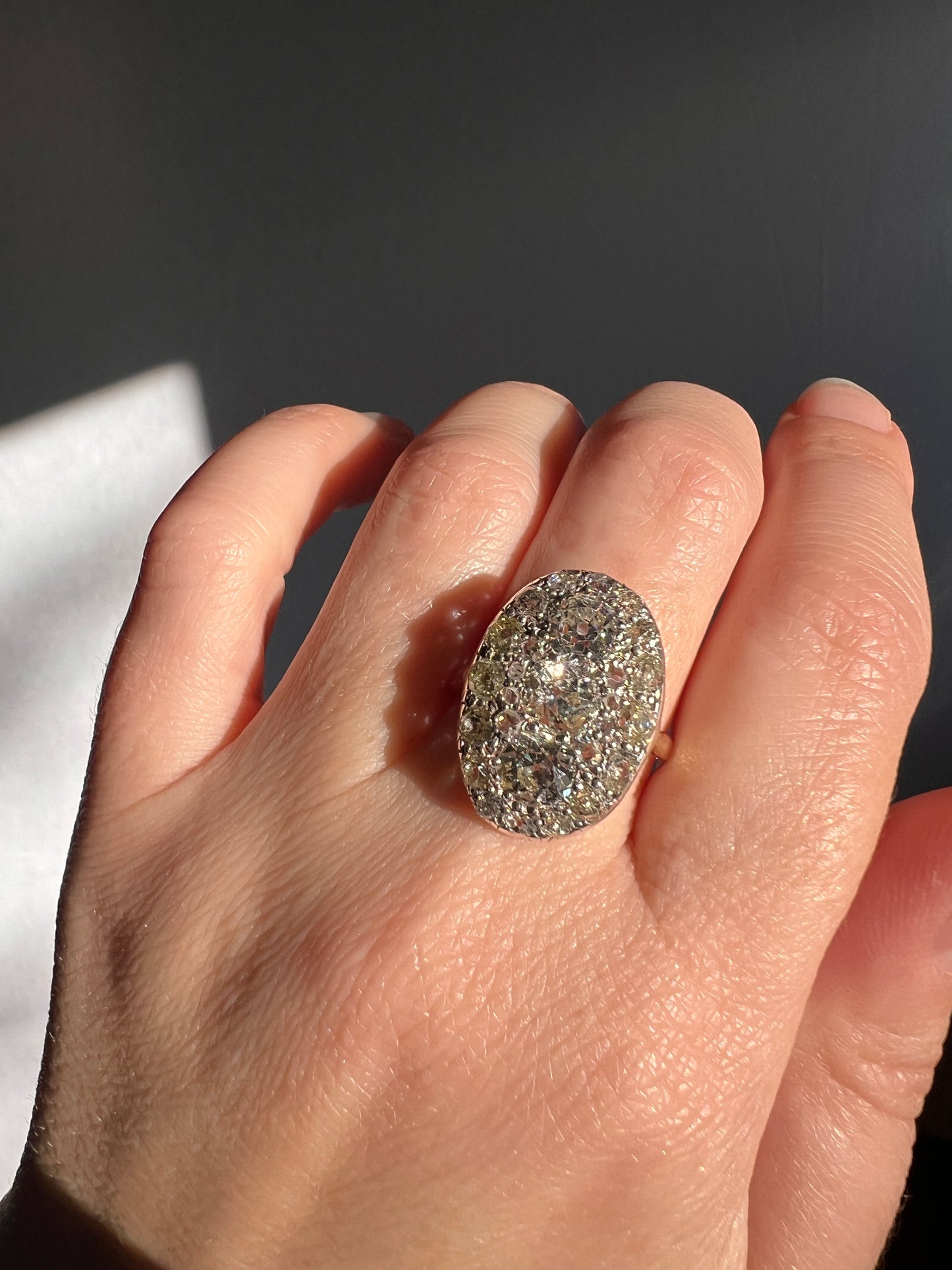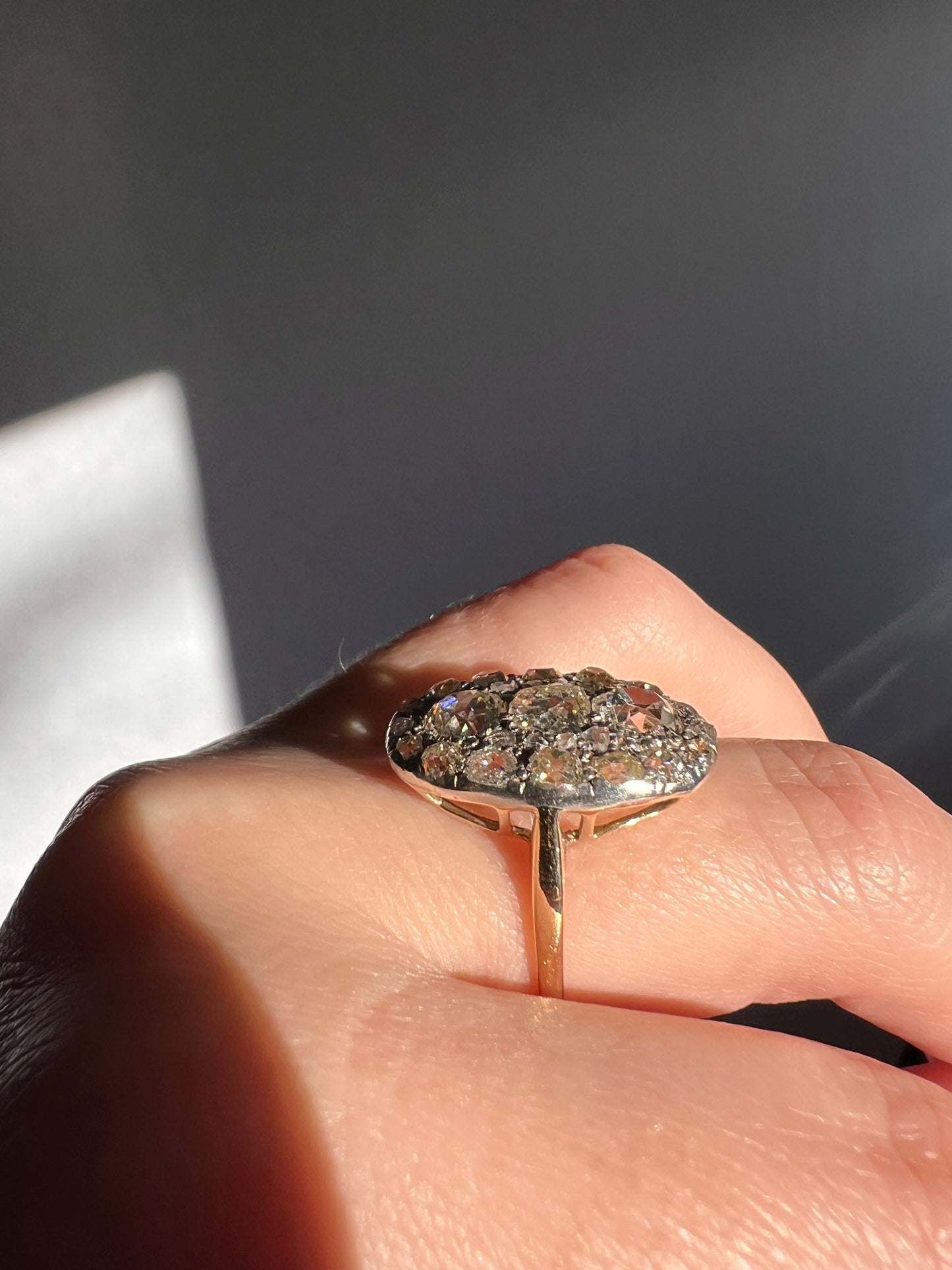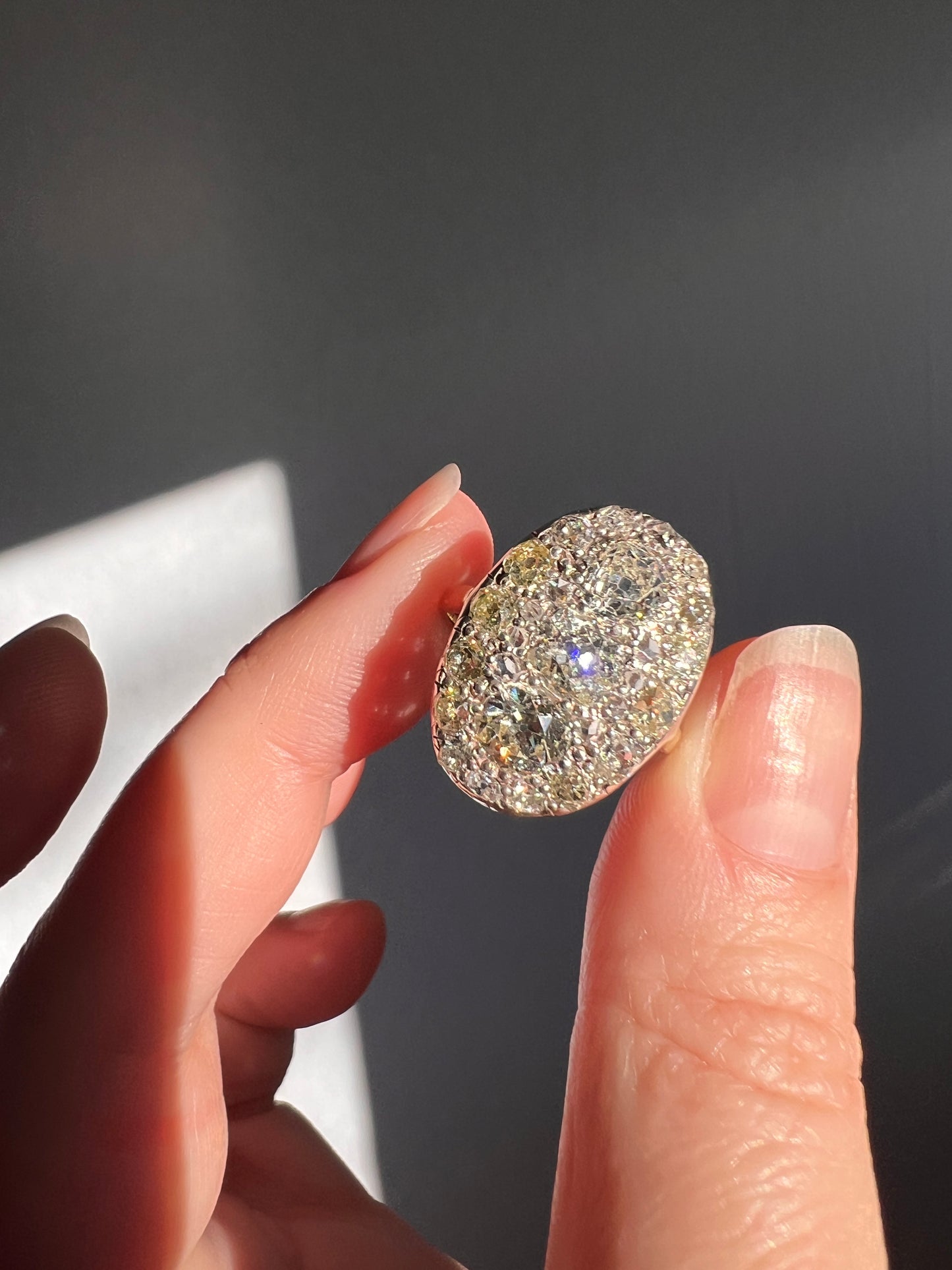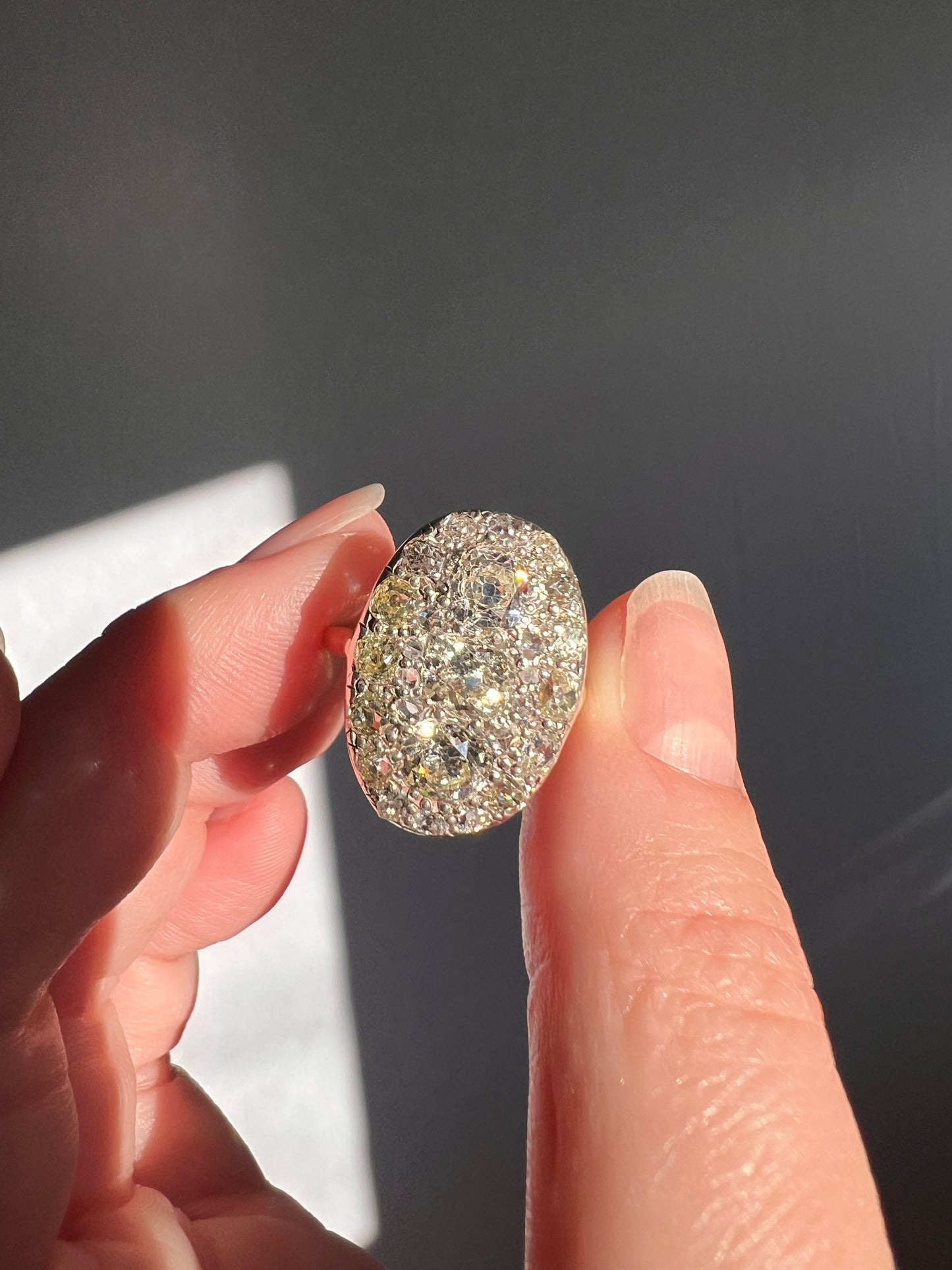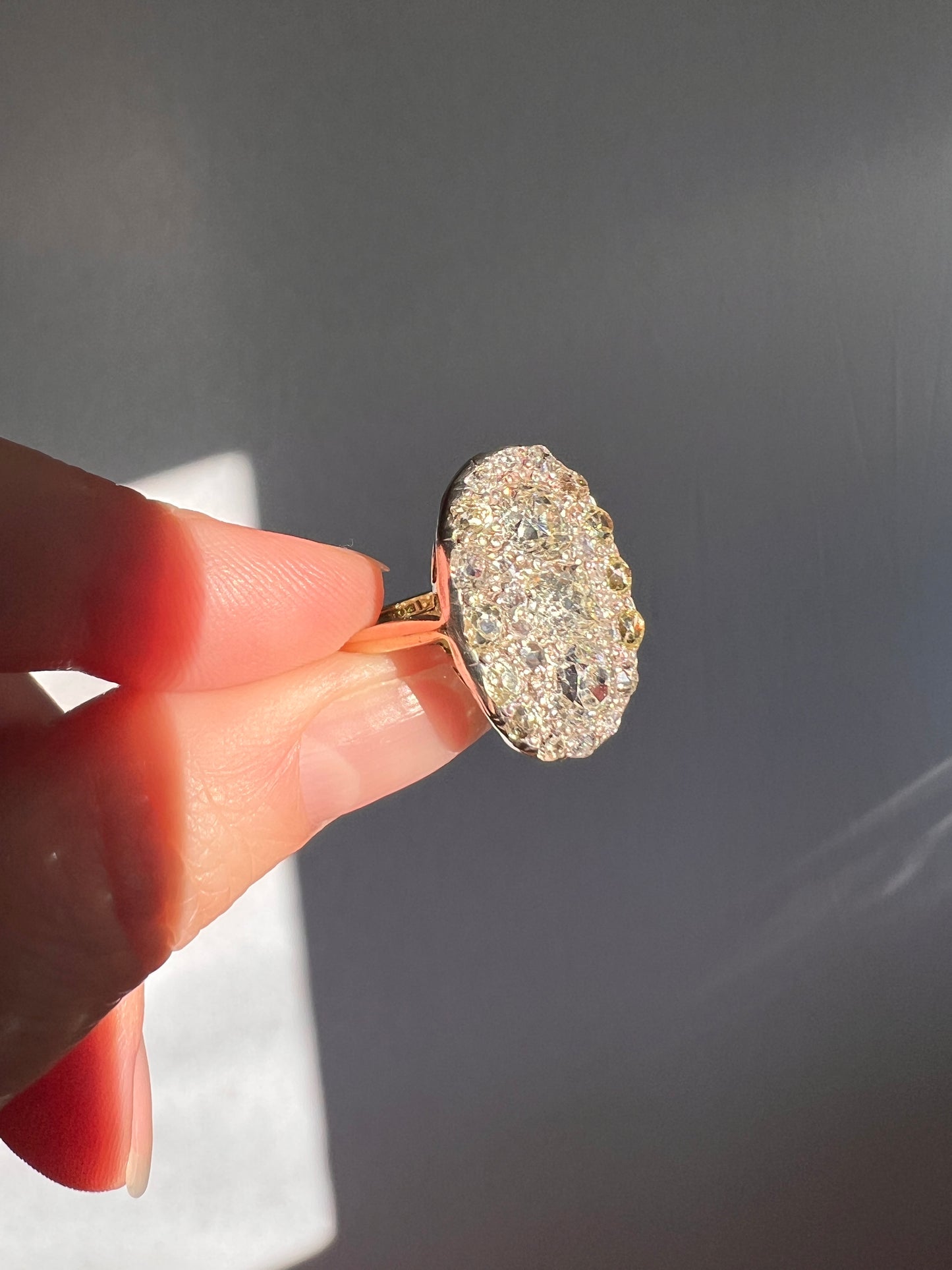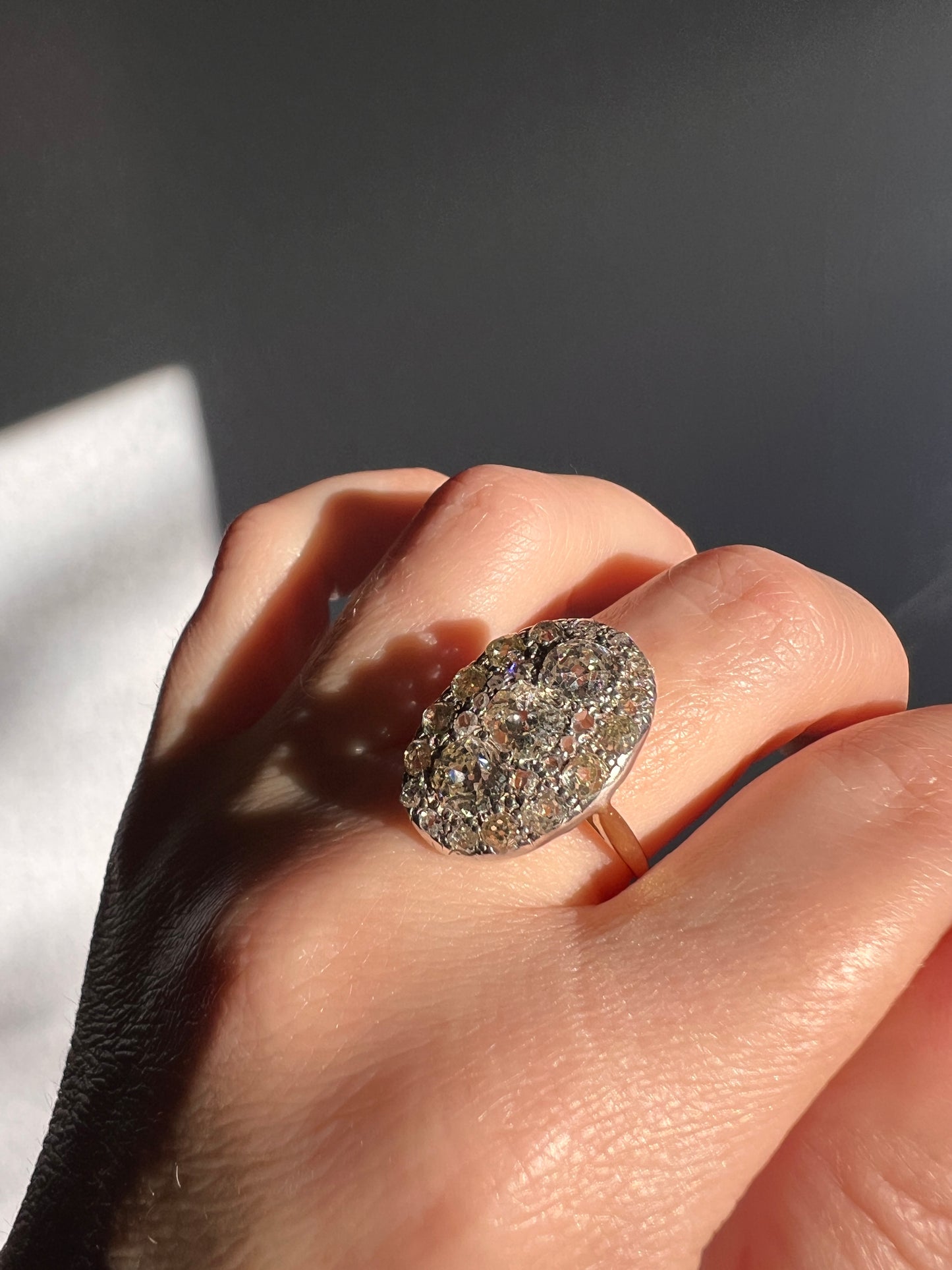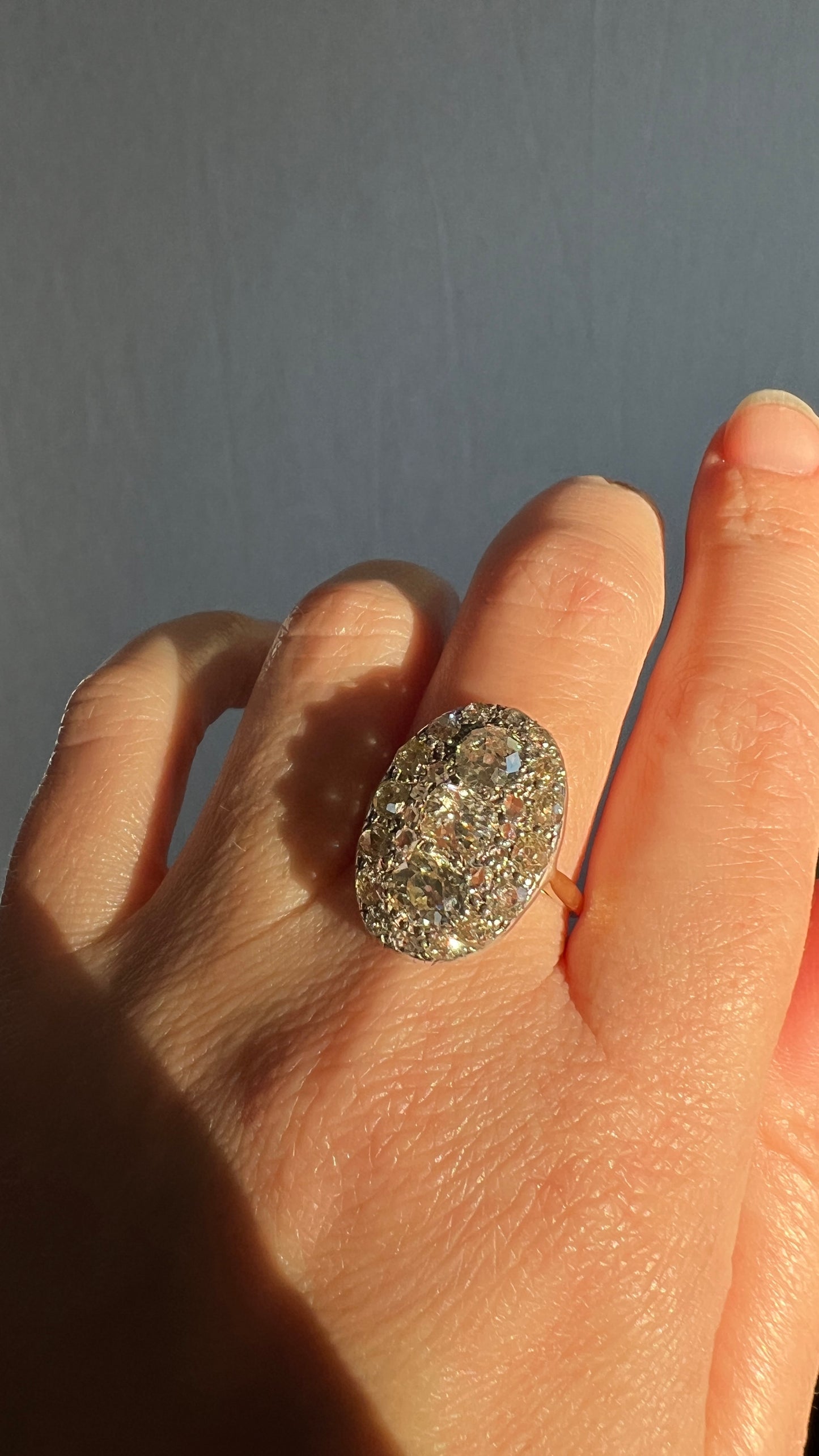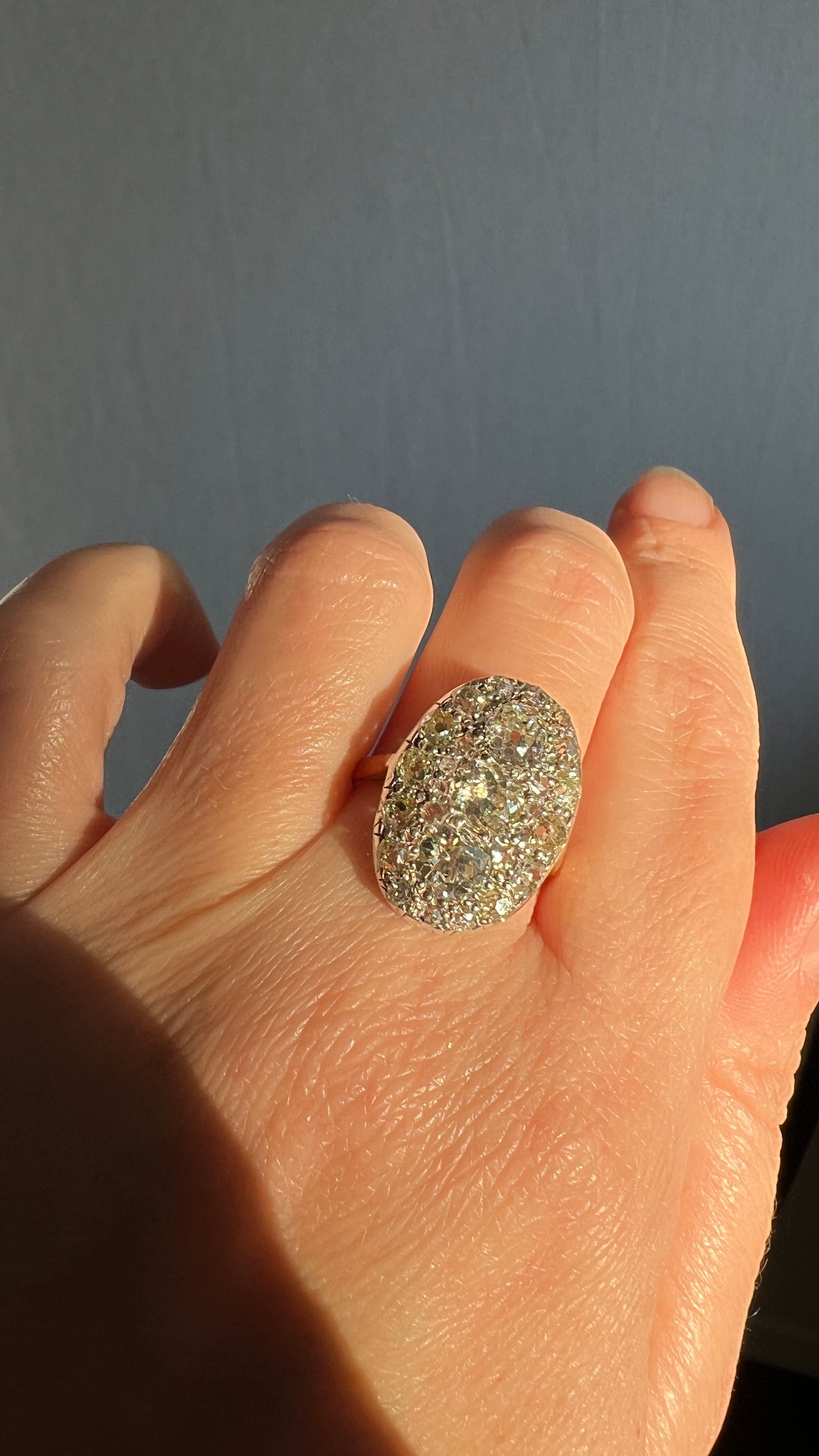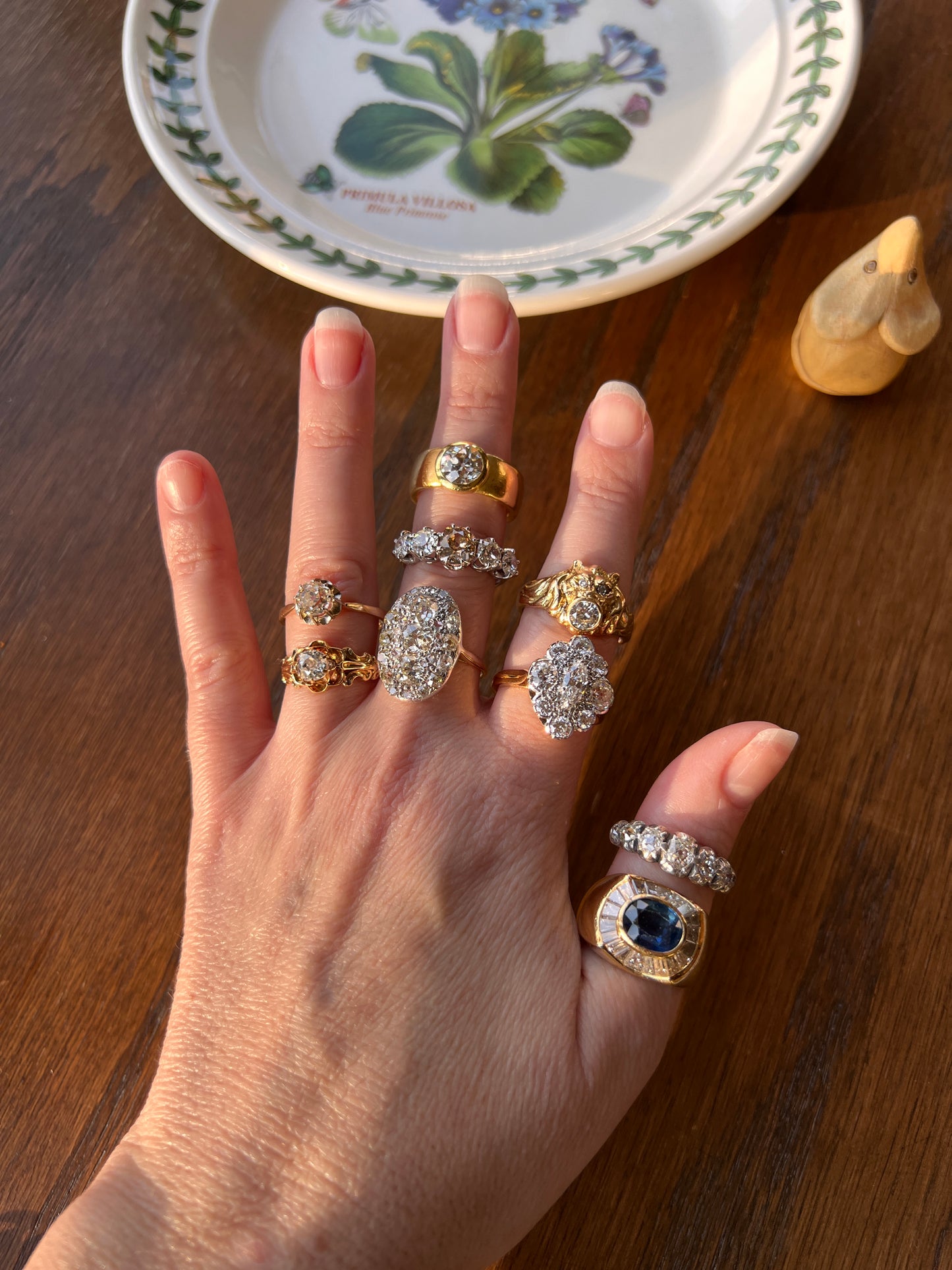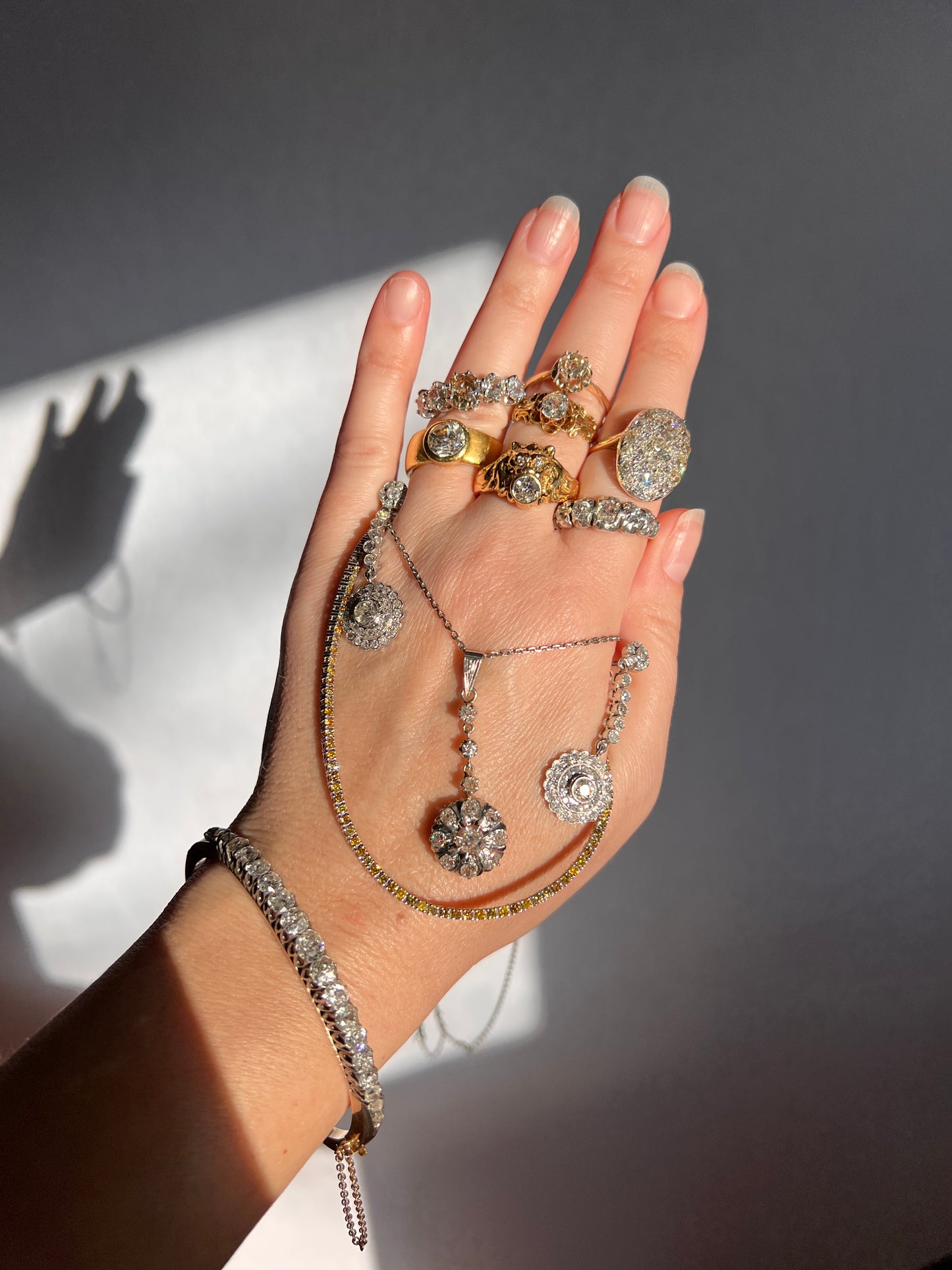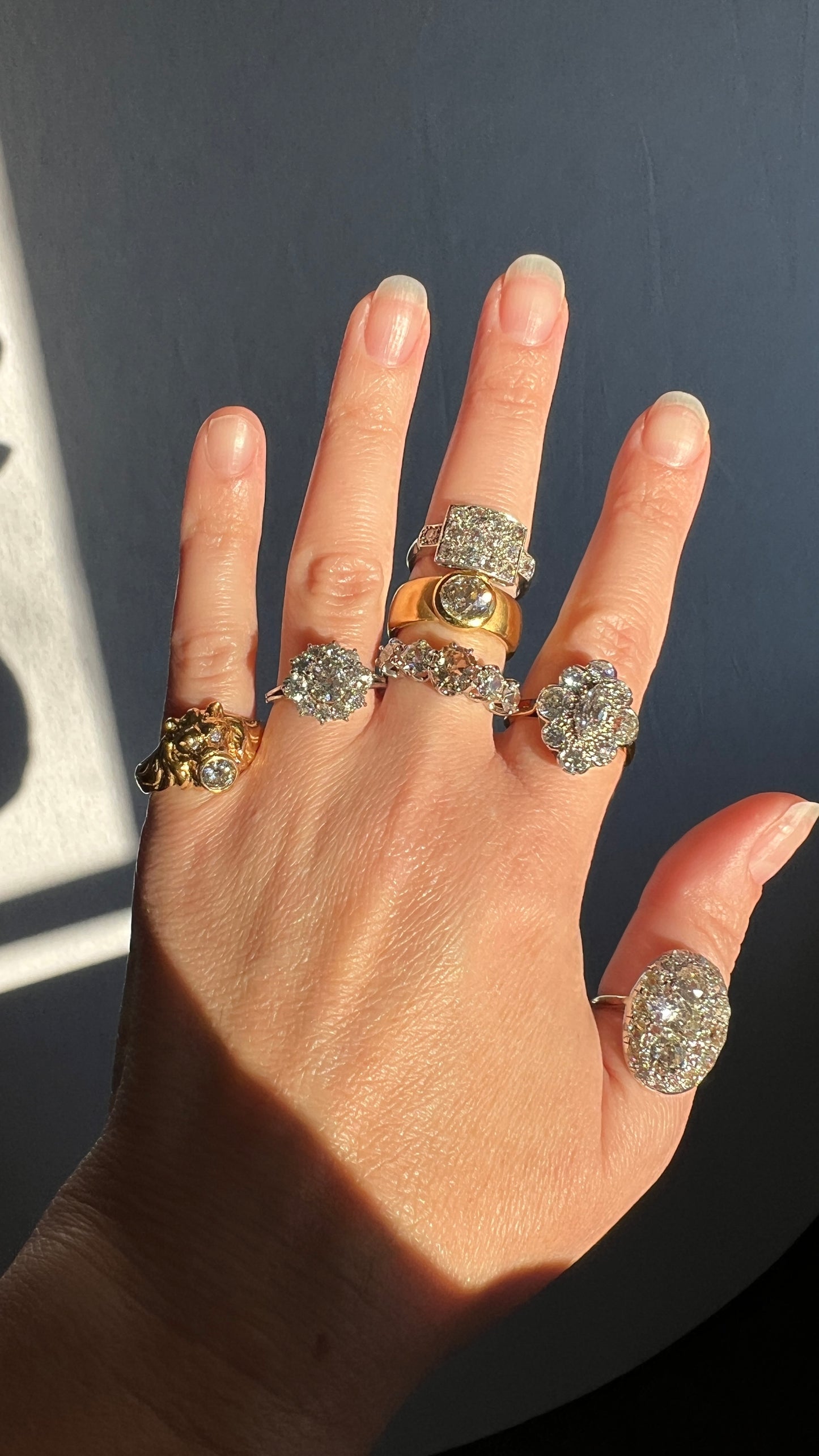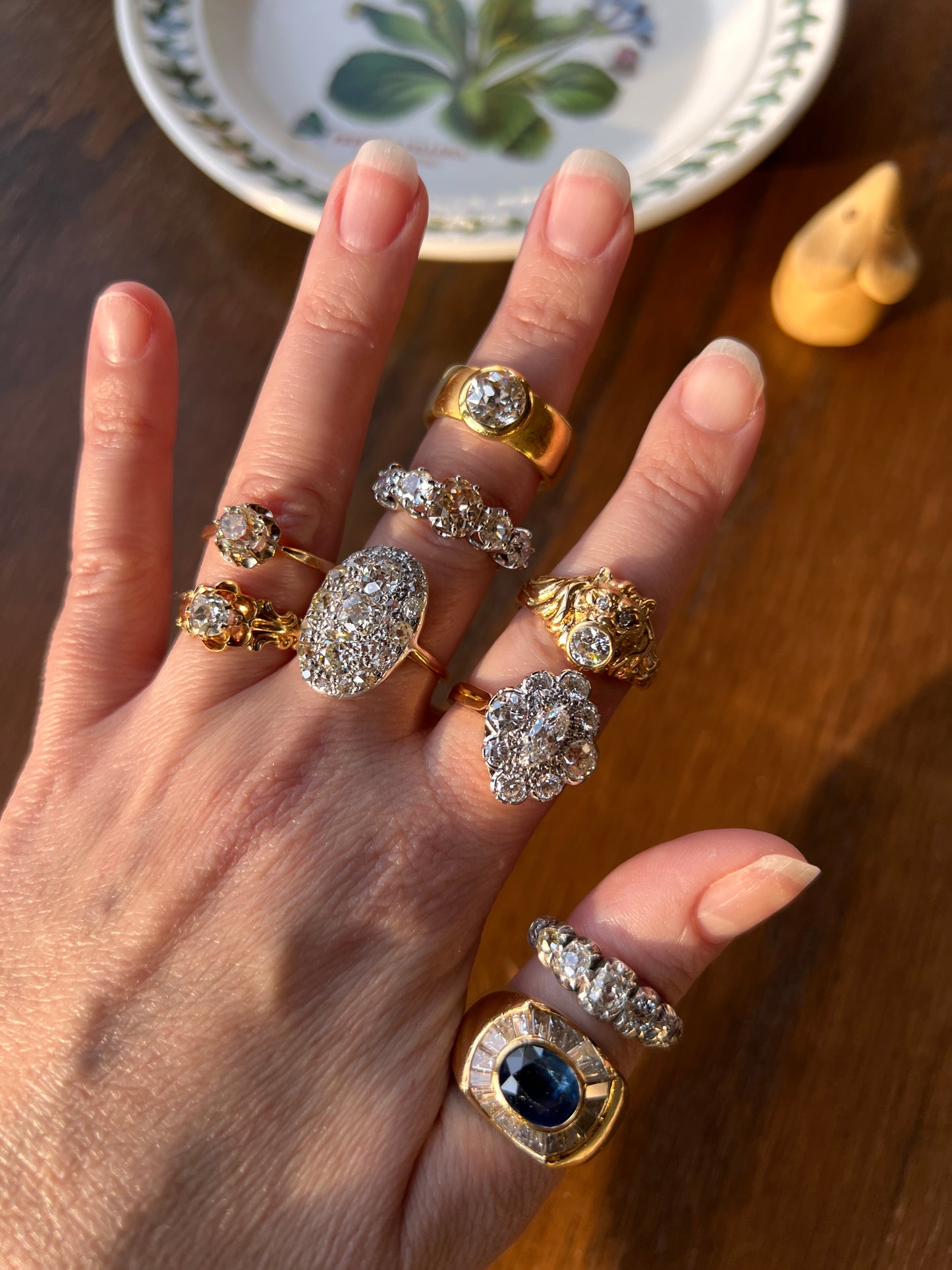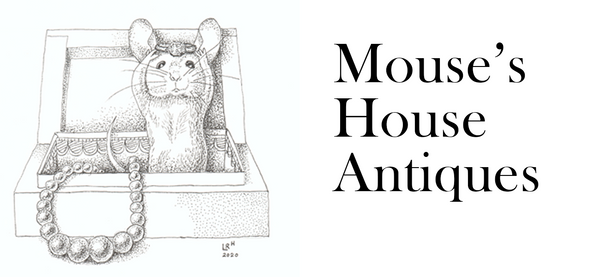Mouse's House Antiques
XL Antique Four Carat Old Mine Cut DIAMOND Cobblestone CLUSTER Ring 18k Gold Oval Chunky Warm Yellow OmC
XL Antique Four Carat Old Mine Cut DIAMOND Cobblestone CLUSTER Ring 18k Gold Oval Chunky Warm Yellow OmC
Couldn't load pickup availability
ABOUT:
Of all the ring requests I receive, the antique old mine cut cluster ring is the one in highest demand. This is certainly one of my all time best so I won't be disappointed if she stays in the shop forever so that I can wear her time and again! She is so "me" - with the mix of white to warm to yellow diamonds and exceptional "crustiness" of the diamond encrusted ring face with high crowns popping out.
Large scale oval face is with the cobblestone texture of over four carats of antique diamonds. The ring features three center larger diamonds in a row surrounded by rose cut diamond spacers / gemset prongs and a halo of 16 additional old mine cuts in demi collets. The ring is crafted in 18k gold with the ring face topped in silver as was customary for the period to set diamonds in a white metal. The bead prongs setting the diamonds in the center of the ring add to the all over texture of the ring face.
High crowns to the chunky diamonds, so fun to view from the side - I'm in love! This one is a real show stopper. And the mix of hues to the stones gives the piece such a great antique look. Five of the stones in the halo are pale yellow (one of which is fancy yellow). These warm to yellow hues were often chosen intentionally by diamond cutters of the time and are sought after by many collectors (me me me!!!). These stones were hand cut long long before the four c's of grading modern machine cut diamonds ever existed, during a period when rough diamonds actually came from mines that produced warmer colored stones. I have a similar, smaller scale one in my collection but with even warmer stones that I am drawn to so I am regretfully letting this one go.
Ornate openwork basket setting to the underside of the slightly domed ring face. Amazing glitter factor with a large footprint on the finger, 0.8 inch north south on the finger. A real attention grabber, it is quite the bauble with exceptional sparkle factor.
If I were a more patient person I would have waited to list this one for better lighting, to highlight the chunky sparkle. It is actually raining today in Minnesota but it's been a long while since we've had a sunny day so I decided to show her off even in low ambient light. I will update the pictures when we see the sun again - yaaaay Minnesota weather!
There is an old serial number stamped inside along with the 18CT hallmark for 18k gold.
Antique box in photos is not included. Please note the measurements as I have small fingers and it can be difficult to determine scale from pictures. Feel see my website for more photos or video as I have many besides those allowed here.
SIZE & MEASUREMENTS:
Size 6 3/4. The stones are stable and propped on a platform so it should be sizeable but opinions vary with modern jewelers working on antiques so it is always best to check with your local jeweler who would be doing the work. Usually they say within 2 sizes is a good guide.
Weight is 4.15 grams. The ring face is 21 by 15mm and 5.8mm off the finger.
I do not remove antique stones from their settings for exact measurements and their depths vary but estimates to over four carats. The center diamonds are .7 to .75 carat each, (about 5.5 to 6mm cushion cuts with varying high crowns). The old mine cuts in the halo are 2 to 3mm each. The eight rose cut spacers are small - 1.5 to 2mm each.
IMPORTANT CONDITION NOTES:
Typical antique diamonds, with some natural inclusions and hues. Two of the largest stones are eye clean. The center stone has a few small wisps and a natural frosty inclusion in one area which carries up to the surface leaving a small unpolished indented natural inclusion on one of the side facets. This can catch the light and be eye visible if seeking it out but not glaring. Two of the smaller stones have indented natural inclusions as well. GIA defines these as a dent that occurs under the surface of a diamond as a result of the diamond cutter's decision not to polish it off, because doing so could end up harming the diamond so the cutters would work around it - this is not considered a defect or blemish but under magnification appear like an unpolished area. Two of the smaller stones appear quite frosty throughout from inclusions. No dark carbon spots so any other small needles, crystals and wisp inclusions are only very slightly eye visible but seen more with a loupe if you are looking for flaws. I don't see any damage aside from a tiny nibble under magnification only here or there. The rose cuts are typical rough cuts, very small with frosty and irregular edges, they tend to always look this way. The ring has a wonderful chunky sparkle. For hues, five stones are pale yellow, one being fancy - if the sun would come out, these would pop and be more noticeable than in photos. These special, unique eccentricities in old hand cut diamonds make many of us collectors do the happy dance. Two others have a noticeable warmth, the rest varying lighter warmth more under lit magnification, typical for this period, long before the four C's were created for grading modern machine cut stones. Some of this is due to their chunky cuts giving the piece a great antique sparkle, again even more noticeable in direct sunlight. It is so fabulous. But as a disclaimer, this is not the ring for collectors who want their antique diamonds to be bright white and crystal clear.
Please note that all my pieces are pre-owned and in estate condition. They will have patina, surface wear, a few small nicks. These pieces may also have evidence of a sizing, some build up around the stones and / or inclusions seen under magnification, typical for antique pieces. I have mentioned any noticeable issues above and they are all still wearable and eager to be loved and accepted for many years to come, (the preservation of antique jewelry, even those with signs of their age and history, is important to me. : )
But - Please note due to age, this piece is not in mint condition. Pictures also serve as part of the description and condition report so please utilize the zoom feature which will magnify any wear significantly more than what is visible to the eye while wearing : )
I enjoy making my customers happy and matching unique pieces with new homes. Please feel free to reach out to me with any questions! It means a lot to me that you are visiting my shop! : )
SOCIAL:
Please feel free watch @mouseshouseantiques on Instagram for inventory drops, sneak peaks and previews! And check out my website www.MousesHouseAntiques.com
The whole "4 C's" of cut, color, clarity, carat didn't come about until the 1940s so prior to that and especially on antique pieces, there was not as much emphasis placed on those things. (Sure people probably appreciated a certain look of a certain diamond as it appeared to the eye but it was not a graded scale like we have today for machine cut stones.) So it is difficult to judge antique stones against modern day diamonds and their grading system. No two old cuts are the same as they were crafted in times lacking any modern standards. The diamond cutters of the time were experts at hand cutting each stone to enhance it which means that even lower color grades can be cut to appear whiter. (Although it is also worth noting that many antique collectors prefer and seek out antique diamonds with warmer hues.) Even inclusions were cut around to accent the best characteristics of each stone.
It is also interesting that "lower graded" diamonds in today's scale system, were some of the best on the market during this period! So it is less about their grades and more about the unique play of light and color that each one can offer. I read one article that put it: “When searching for the perfect old cut diamond (for you), you need to view them through different eyes as you would for a modern diamond, Laboratory grading reports don’t offer too much information in regards to their individual beauty or sparkle which are based more on their individual character and uniqueness that each one potentially offers.”
Box#@m.1@2$
Share
